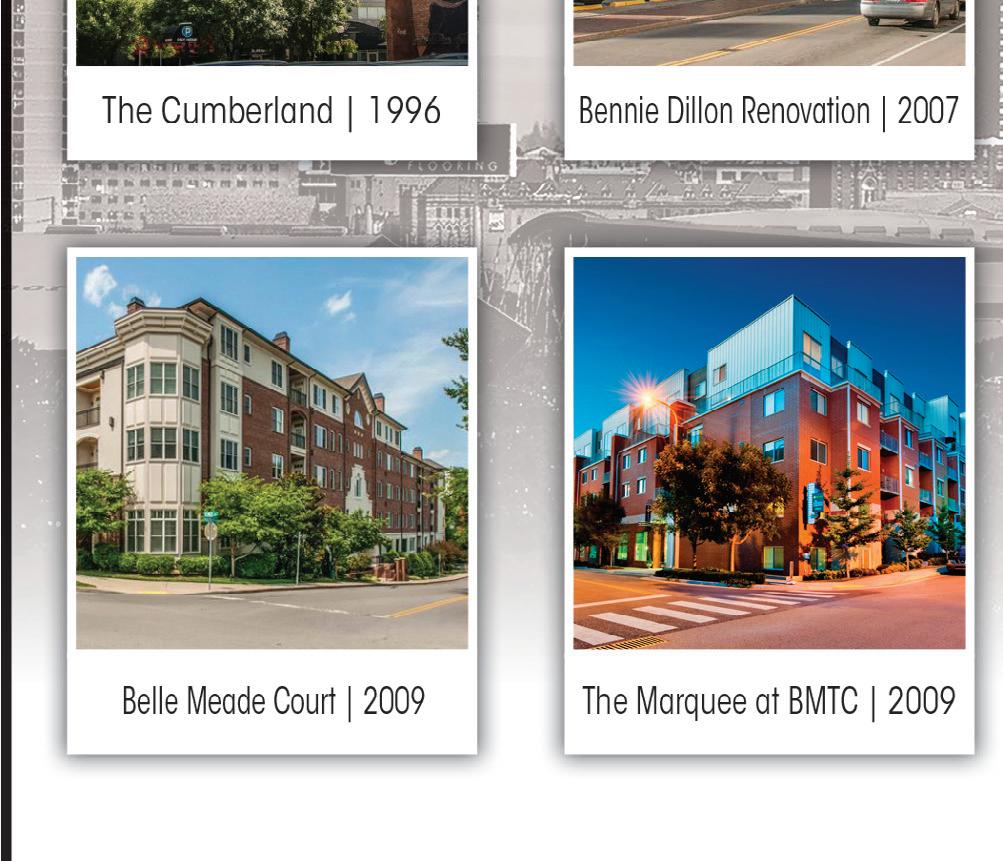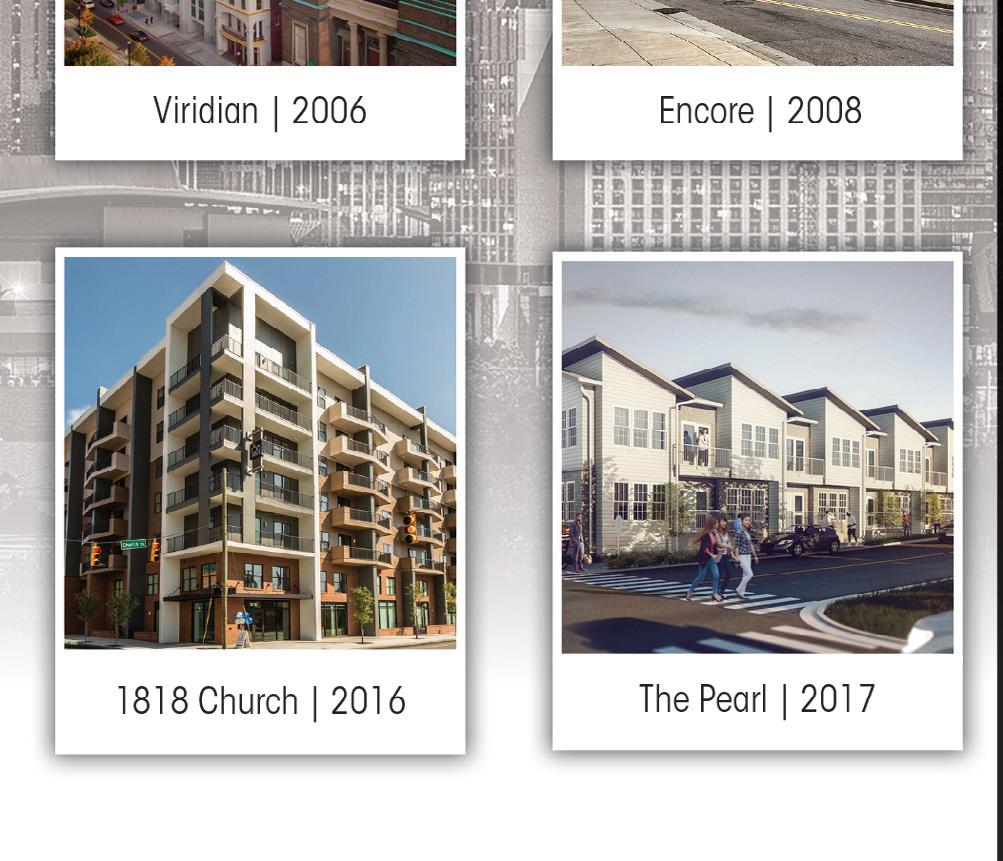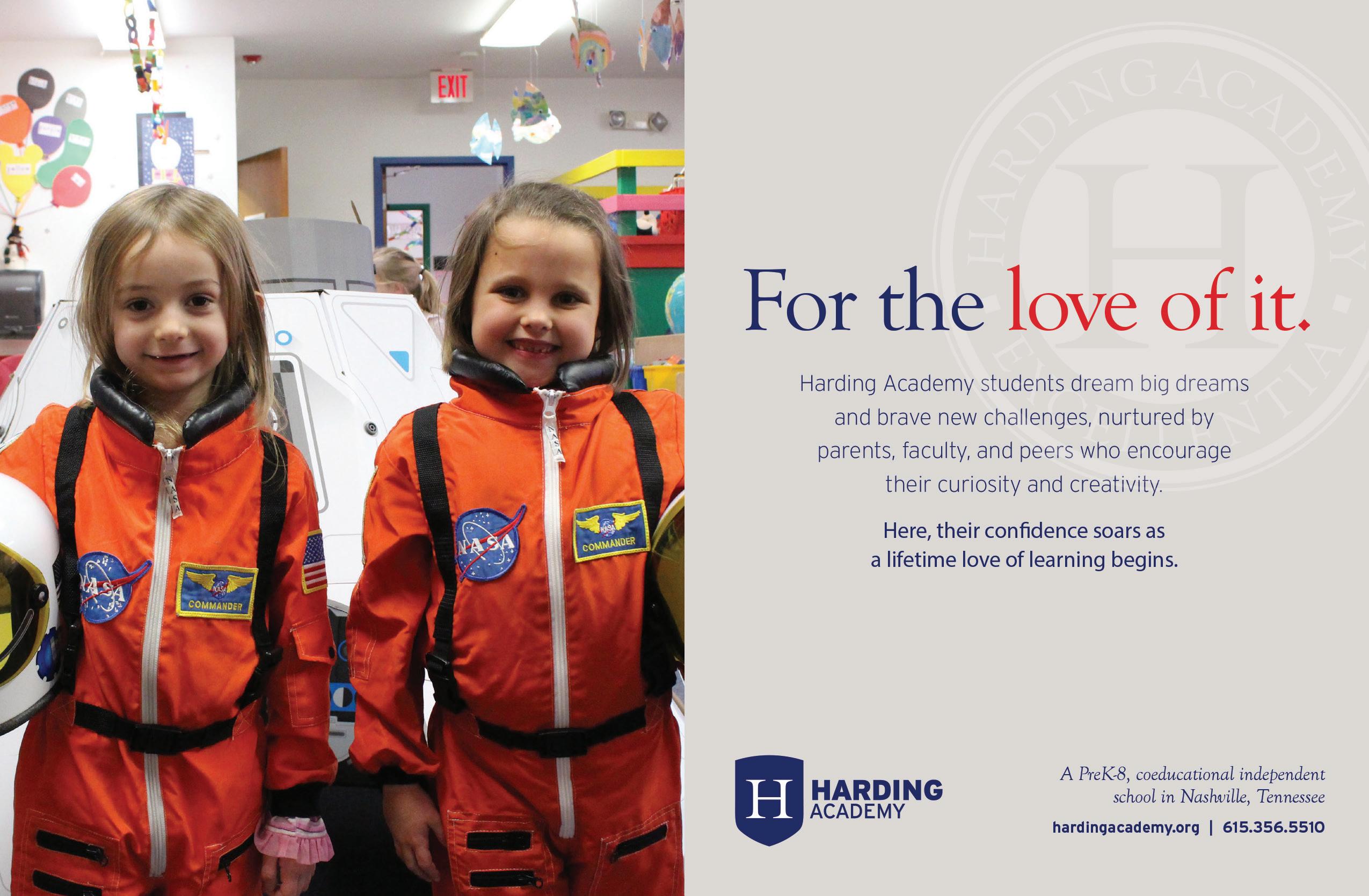health c a r e issue MIND THE GAP













8

















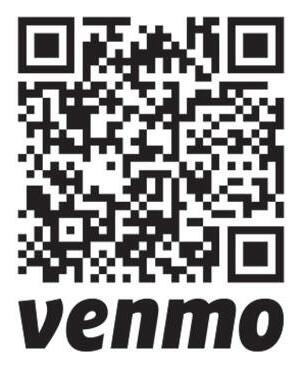
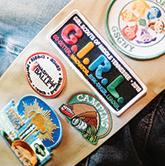

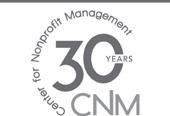

Mike P. talks about the brokeness of the criminal justice system and his search for housing in Nashville.
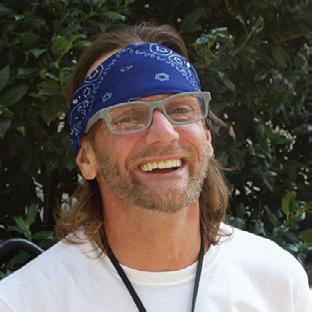
Tenille Townes partners with Girl Scout Troop 6000 to shine a spotlight on homelessness with ‘Somebody’s Daughter.’
‘Aquarela’ arrives at The Belcourt (at 96 frames per second!) to quench Nashville’s thirst for experimental film.
Our vendors write in this issue about doctors, healthcare, medical scooters, tumors and finding a new home.
Contributor Board
Cathy Jennings, Chair Tom Wills, Bruce Doeg, Demetria Kalodimos, Ann Bourland
Linda Bailey
• Amanda Haggard • Hannah Herner • Tom Wills • Paula Carlson • Cillea Houghton • Ridley Wills II • Carey L. Biron • Vincent Hunter • Bailey Basham
• Joe Nolan • Alvine • Vicky B. • Chuck C. • Cynthia P. • June P. • Mr. Mysterio • Ken J. • William B. • Mary B. • Julie B. • Eric H. • David “Clinecasso” C. • Victor J.




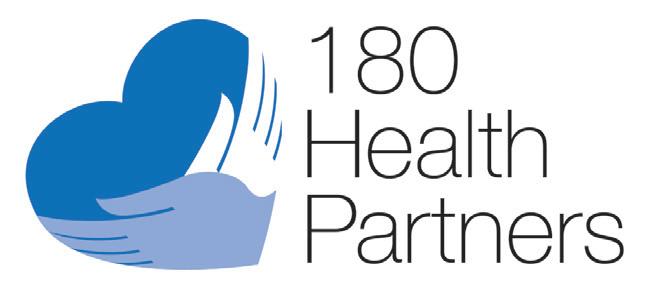
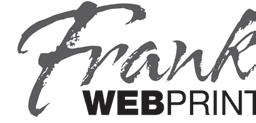
Cathy Jennings • Tom Wills • Joe First
• Andy Shapiro • Michael Reilly • Ann Bourland • Patti George • Linda Miller • Deborah Narrigan • John Jennings • Barbara Womack • Colleen Kelly • Janet Kerwood • Logan Ebel • Christing Doeg • Laura Birdsall
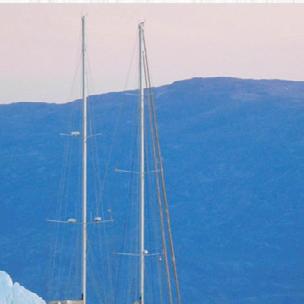
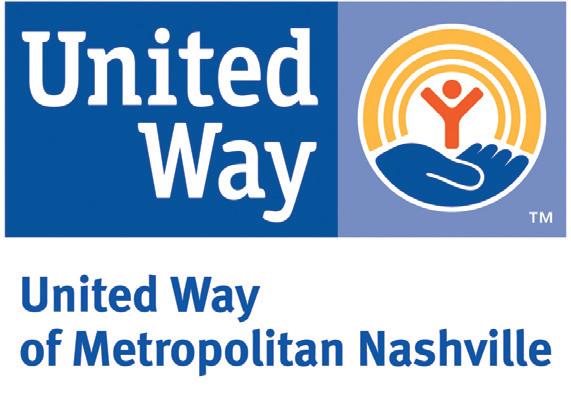
• Nancy Kirkland • Mary Smith • Andrew Smith • Ellen Fletcher • Michael Chavarria
Will Connelly, Tasha F. Lemley, Steven Samra, and Tom WIlls Contributor Co-Founders
Editorials and features in The Contributor are the perspectives of the authors.
Submissions of news, opinion, fiction, art and poetry are welcomed. The Contributor reserves the right to edit any submissions. The Contributor cannot and will not endorse any political candidate.
Submissions may be emailed to: editorial@thecontributor.org
Requests to volunteer, donate, or purchase subscriptions can be emailed to: info@thecontributor.org Please email advertising requests to: advertising@thecontributor.org







Mailng Address

The Contributor P.O. Box 332023, Nashville, TN 37203
Editor’s Office: 615.499.6826 Vendor Office: 615.829.6829
Proud Member of:



Printed at:
Follow The Contributor:
Copyright © 2018 The Contributor, Inc. All rights reserved.


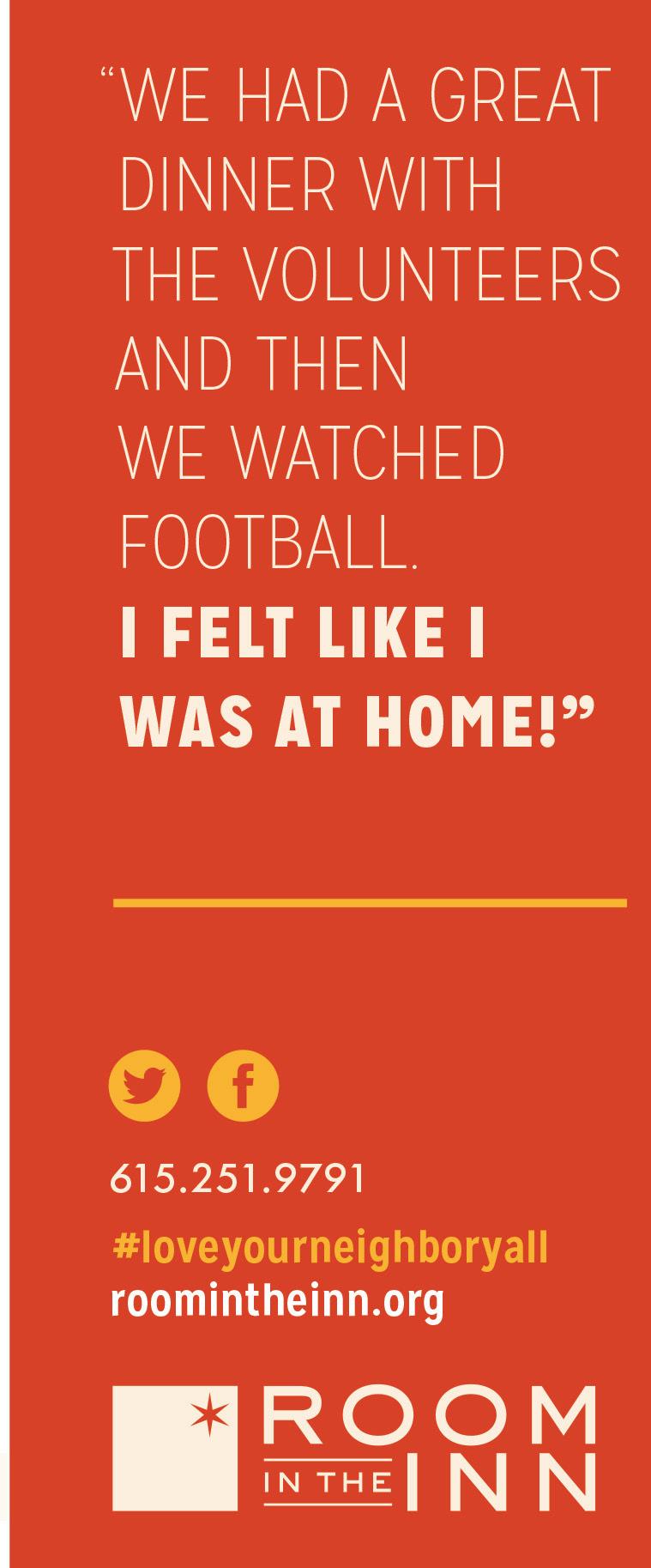
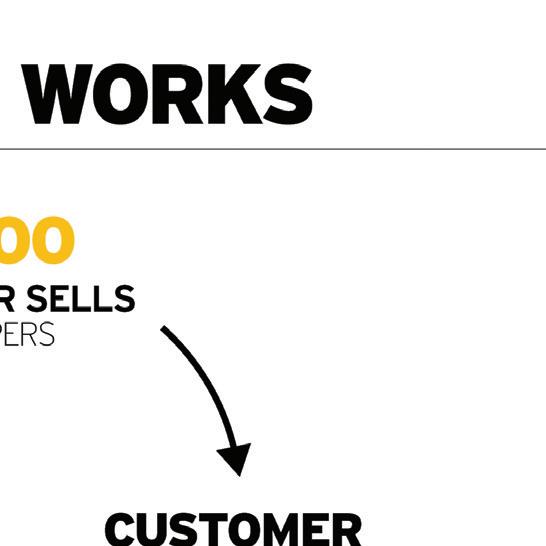 BY TOM WILLS, CO-FOUNDER
BY TOM WILLS, CO-FOUNDER
The paper you just paid for was bought by someone else first, otherwise it wouldn’t exist. That’s how The Contributor works. A vendor who experienced homelessness paid 50 cents for this paper and then sold it to you. By buying it and taking it with you, you’ve just encouraged that vendor to buy another. BOOM! That’s the solution. Now keep reading. This paper has something to say to you.
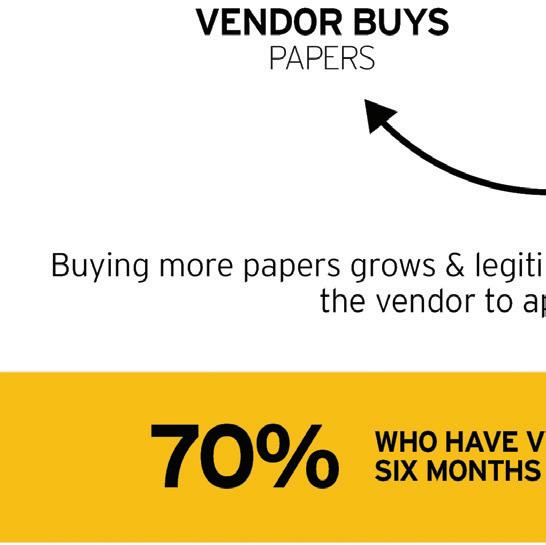
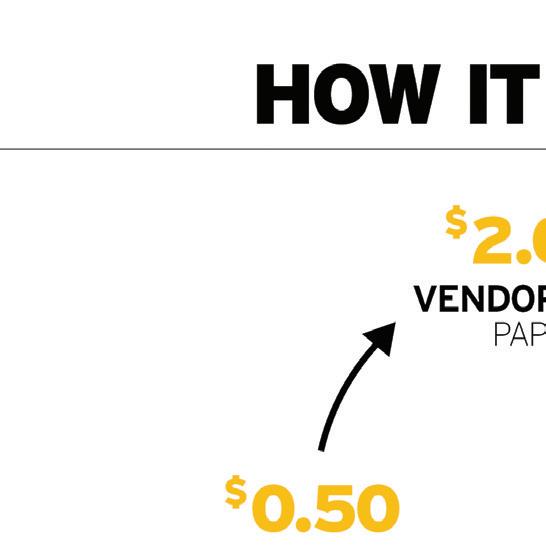
Street papers provide income for the homeless and initiate a conversation about homelessness and poverty. In 2007, The Contributor founders met at the Nashville Public Library downtown to form one. In a strike of lightning we named it The Contributor to infer that our vendors were “contributors to society,” while their customers could contribute to their work. But, thunder from lighting is always delayed …
It took three years, but Nashville embraced us like no other city in the world. The Contributor became the largest selling street paper per-capita on the globe. And today 50 percent of our six months or longer tenured vendors have found housing. BOOM! The thunder has struck.
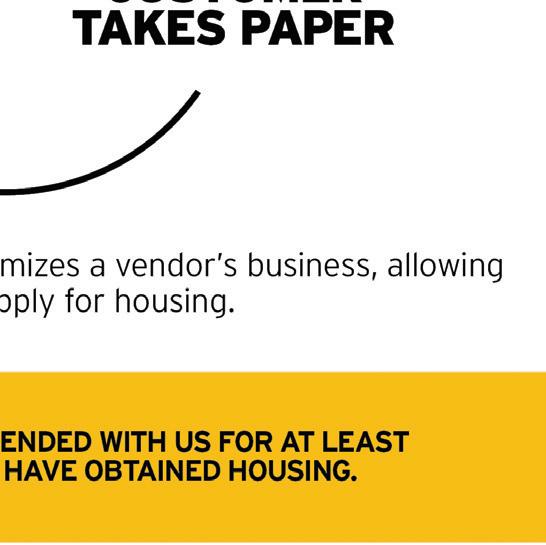
The Contributor is a different kind of nonprofit social enterprise. We don’t serve meals or provide emergency shelter. We don’t hire people in poverty to create products or provide a service. Rather, we sell newspapers to homeless people who work for themselves. We train them to sell those papers to you, keep the money they earn, and buy more when they need to replace their stock.
Our biggest fans don’t always get this. Like lightning without the thunder, they see the humanity of the vendor but misunderstand the model. Case in point: In 2013 during a funding crunch, a representative of one of Nashville’s biggest foundations exclaimed, “I’m such a big fan that I never take the paper!” We responded, “Well, that’s why we are in a funding crunch.” BOOM! Thunder was heard. Taking the paper makes our model work — not taking it breaks it. And selling the paper twice doesn’t just fund the paper, it funds housing and change. BOOM! Our vendors report their sales to qualify for subsidized housing and even for standard housing deposits and mortgages. They don’t consider your buying the paper a “donation.” It is a sale. When they sell out, they buy more and build the paper trail of a profitable business. Until making these sales, many of our vendors had never experienced the satisfaction of seeing their investment pay off. And when it does, it liberates! They have become “contributors” to their own destiny. And Nashville has become a city of lightning and thunder. BOOM! Now that you are a SUPPORTER , become an ADVOCATE or a MULTIPLIER You are already a SUPPORTER because you know that taking the paper makes the model work. You bought the paper and you are reading it. Now your vendor is one copy closer to selling out, which is exciting! Now you can become an ADVOCATE when you introduce your friends to your favorite vendor, follow us and share our content on social media, contact us when you witness a vendor in distress or acting out of character, or explain why others should pick up a copy and always take the paper when they support a vendor. And, you can become a MULTIPLIER when you advocate for us AND directly donate to us or become an advertiser or sponsor of The Contributor. Our income stream is made of 50-cent- at-a-time purchases made from our vendors, matched by contributions, ad sales and sponsorships from multipliers like you. Because our vendors are business owners, your donations are seed-money investments in their businesses and multiply in their pockets. Every donated dollar multiplies four-to-seven times as profits in the pockets of our vendors. Thanks for contributing.
El periódico que usted acaba de pagar fue primeramente comprado por alguien mas, de otra manera no existiría. Así es como funciona The Contributor. Un vendedor que está sin hogar pagó 50 centavos por este periódico y después se lo vendió a usted. Al comprarlo y llevarlo con usted, usted animo a este vendedor a comprar otro. BOOM! Esa es la solución. Ahora continúe leyendo. Este periódico tiene algo que decirle. Los periódicos vendidos en la calle proveen ingresos para las personas sin hogar e inicia una conversación sobre lo que es la falta de vivienda y la pobreza. En el 2007, los fundadores de The Contributor se reunieron en una librería pública en Nashville para formar uno. Y como golpe de un rayo, le llamamos The Contributor para dar a entender que nuestros vendedores eran “contribuidores para la sociedad,” mientras que los consumidores podrían contribuir a su trabajo. Pero, el trueno siempre tarda más que el rayo. Nos llevó tres años, pero Nashville nos acogió como ninguna otra ciudad en el mundo. The Contributor se volvió uno de los periódicos de calle más vendido en el globo. Y hoy el 50 por ciento de nuestros seis meses o más de nuestros vendedores titulares han encontrado casa. BOOM! Ha llegado el trueno.
JENNINGSThe Contributor es una empresa social sin fines de lucro muy diferente. Nosotros no servimos comida or proveemos alojo de emergencia. No contratamos gente en pobreza para crear productos or proveer un servicio. En vez, nosotros vendemos periódicos a las personas sin hogar para que ellos trabajen por ellos mismos. Nosotros los entrenamos como vendedores, ellos se quedan el dinero que se ganan, y ellos pueden comprar más cuando necesiten reabastecer su inventario.
Nuestros mas grandes aficionados no entienden esto. Como un rayo sin trueno, ellos ven la humanidad de el vendedor pero no comprenden el modelo. Un ejemplo: En el 2013 durante un evento de recaudación de fondos, uno de los representantes de una de las fundaciones más grandes de Nashville, exclamó: “Soy un gran aficionado, y es por eso que nunca me llevo el periódico.” Al cual nosotros respondimos: “Y es por esa razón por la cual estamos recaudando fondos.” BOOM! Y se escuchó el trueno! El pagar por el periódico y llevárselo hace que nuestro sistema funcione, el no llevarse el periódico rompe nuestro sistema.
Y el vender el papel dos veces no da fondos para el periódico, pero da fondos para casas y causa cambio. BOOM! Nuestros vendedores reportan sus ventas para calificar para alojamiento subvencionado y hasta para una casa regular, depósitos e hipotecas. Ellos no consideran el que usted compre el periódico como una “contribución” pero más lo consideran como una venta.
Cuando se les acaba, ellos compran mas y asi logran establecer un negocio rentable. Hasta que lograron hacer estas ventas, muchos de nuestros vendedores nunca habían experimentado el placer de ver una inversión generar ganancias. Y cuando logran hacer esto, da un sentido de Liberación! Ellos se han vuelto contribuidores de su propio destino, y Nashville la ciudad de el trueno y el rayo. BOOM!
Ahora que te has vuelto nuestro SEGUIDOR, vuelve te en un ABOGADO o un MULTIPLICADOR. Ya eres nuestro SEGUIDOR, porque sabes que al llevarte este periódico sabes que esto hace que nuestro modelo funcione. Compraste el papel y lo estas leyendo. Ahora nuestro vendedor está a una copia más cerca de venderlos todos. Que emoción!
Ahora que te has vuelto nuestro ABOGADO cuando presentes a tus amigos a tu vendedor favorito, siguenos y comparte nuestro contenido en social media, contactanos cuando seas testigo de un vendedor actuando de manera extraña o fuera de carácter. O explicale a tus amigos porque ellos deben de llevarse el periódico cuando ayuden a un vendedor.
Te puedes volver un MULTIPLICADOR cuando abogues por nosotros, Y directamente dones a nosotros o te vuelvas un anunciador o patrocinador de The Contributor. Nuestra fuente de ingresos consiste en ventas de 50 centavos hechas por nuestros vendedores, igualadas por contribuciones, venta de anuncios, y patrocinios de multiplicadores como usted. Porque nuestros vendedores son dueños de negocios, las donaciones que den son dinero que es invertido y multiplicado en sus bolsas. Cada dólar donado se multiplica de cuatro a siete veces en la bolsa de nuestros vendedores.
Gracias por Contribuir.
A new program gives men living with substance use issues, poverty and homelessness the ability to get sober with help from the restorative power of being outdoors.
BY PAULA CARLSONFor Tom, life had become bleak. At his lowest point, he was struggling with substance use and living homeless under bridges, in parks and at any shelter he could find.
As a youngster, he had grown up in a “beautiful” family.
“My life was doing great until at 15, I found out about my parents being murdered. After that, everything went downhill,” he says, and addiction took him to the streets.
Immersed in poverty and sadness, he remembers feeling hopeless.
“The day starts out grey,” Tom says, “even when it’s sunny.”
But when Tom (who prefers to use just his first name) arrived at Union Gospel Mission (UGM) in 2014, he found hope through its Expeditions program — an outdoor hiking initiative for men who are enrolled in the outreach mission’s Alcohol and Drug Recovery Program. Without — and sometimes even with — traditional health insurance, it can be difficult to find recovery.
Offered since 2013, Expeditions provides opportunities for men to challenge themselves physically, explore the beauty of nature and make meaningful connec-
tions with one another — all while working towards a life-changing goal.

“We take men in Expeditions into the deep wilderness of British Columbia — mountains, lakes, streams, rivers — to explore and discover what’s there,” says Jack Wagner, a UGM addictions counsellor.
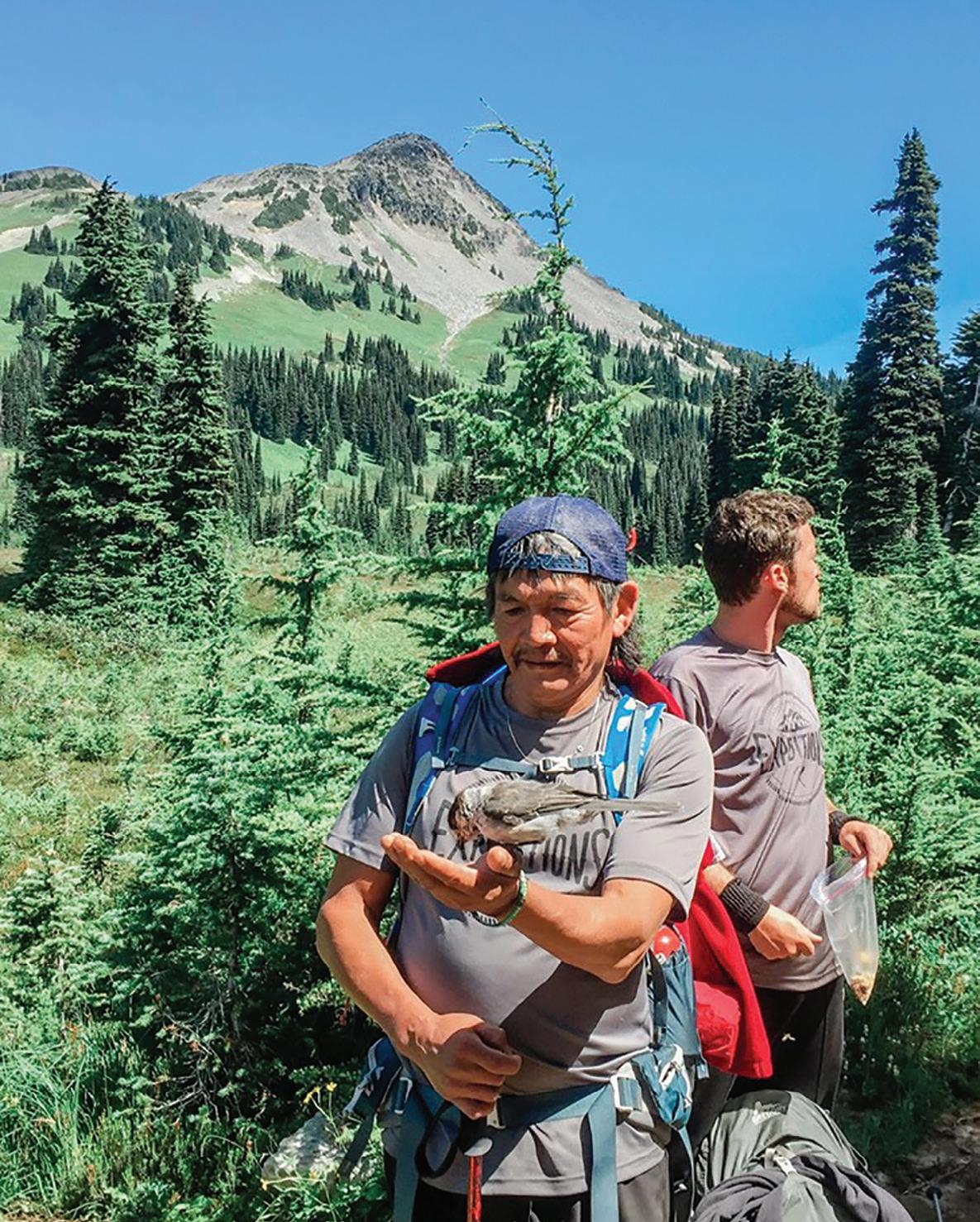
“There’s something about being in nature that is a life-giving environment.”
Immersed in amazing scenery and fresh air, Tom says he found an inner peace and a renewed sense of purpose, inspiration and support to overcome his challenges.
“I kept thinking, ‘This is life. This is how life is supposed to be.’ Clean fresh air, no split-second decisions as to what street I should take. I’m happy to wake up in the morning.”
Today he has secure housing, is working and remains close with his Expeditions friends.
“Doing [these types of hikes] you’re just shocked and are like, ‘Wow I did this.’ I would have never done it in a million years if it wasn’t for this program and my own recovery,” says Tom.
Courtesy of Megaphone / INSP.ngoWE’RE HONORED TO SUPPORT THE CONTRIBUTOR AND TO CHAMPION GOOD NEWS IN NASHVILLE.Participants in Union Gospel Mission’s Expeditions program, including Tom (with bird and celebrating the spectacular view at the end of a trek) hike Panorama Ridge in Garibaldi Provincial Park in British Columbia, Canada. Expeditions offers the chance for me to challenge themselves physically in the wilderness, explore the beauty of nature and forge meaningful friendships. Photos courtesy of UGM
There’s a distinct word that country singer Tenille Townes uses when describing the Girl Scouts of Middle Tennessee Troop 6000: courage.
After the inaugural Troop 6000 was established in New York City in 2017 to serve girls in the shelter system, Nashville quickly followed suit, launching its own Troop 6000 at a local family shelter. Comprised of girls from kindergarten through high school who have been or are currently homeless, the troop ventures on field trips and participates in a range of activities from STEAM programs to horse back riding, earning badges along the way.
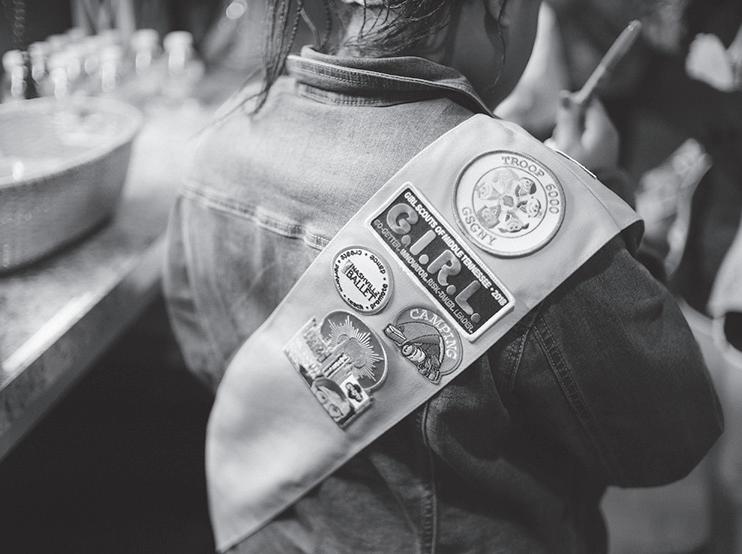
The program is also tailored to their needs, with two troop locations set up in the area so if a member’s housing arrangement changes, she’s able to pick up where she left off in the Girl Scouts curriculum.
“Our girls of Troop 6000 are Girl Scouts first. They get to do everything that any other Girl Scouts would get to do,” Troop 6000 Coordinator Mandi Linde says.
After learning about the mission of Troop 6000, Townes felt compelled to work with the girls and record a new rendition of her song “Somebody’s Daughter,” inspired by a young woman she saw holding a cardboard sign on the side of the road. After handing her a couple dollars, the exchange had Townes pondering about the young woman’s life story, one she turned into lyrics that humanize people, depicting her as a child “counting change at the lemonade stand” to a brighteyed teen planning a prosperous future.
“The idea to have their voices come and sing on this song was something that just felt so right,” Townes describes.
She invited the troop to Sound Emporium to record a reimagined version of “Somebody’s Daughter” with her, the girls experiencing firsthand what it’s like to record a song, in addition to learning about the studio and playing the myriad of instruments scattered throughout the room, earning their music badges in the process. Gathered in a circle
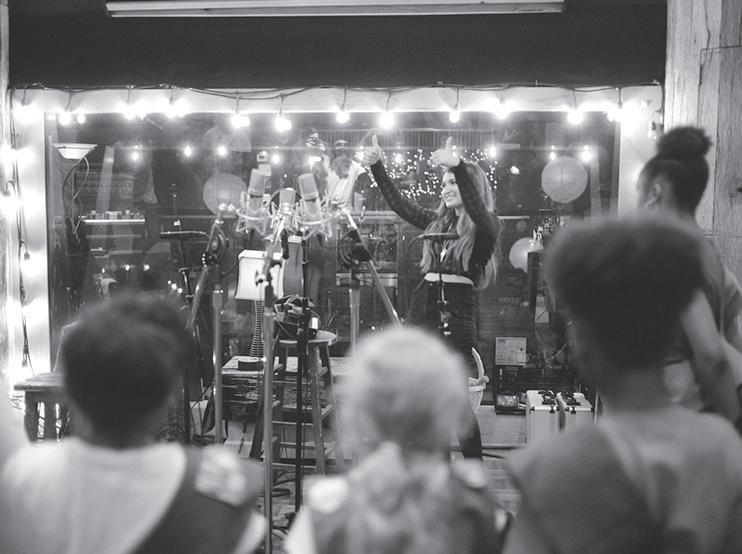
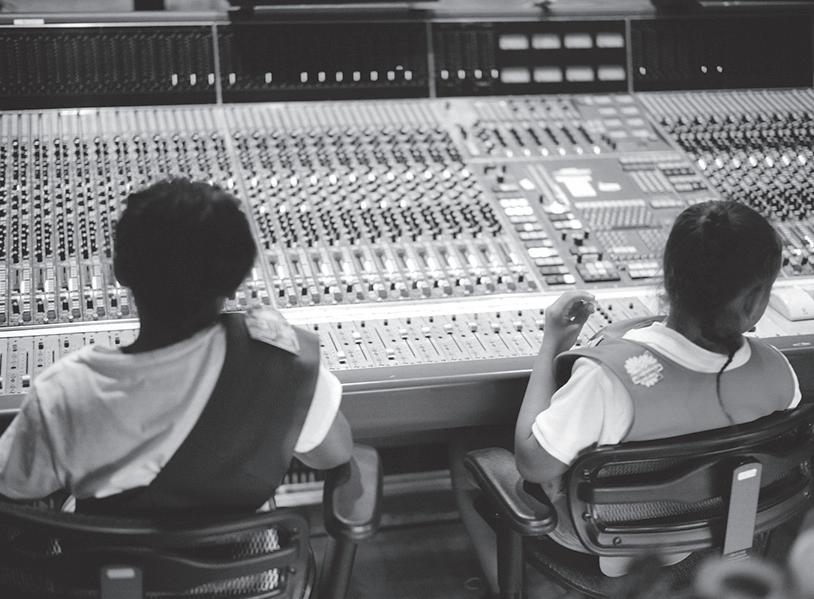
around Townes, the girls stomped and clapped along to the beat while harmonizing with the singer during the reprise of the song’s title in the chorus, their voices and stories combining to give the song a new identity.
“It’s one of my favorite sounds I’ve ever heard. It’s special to think about the fact that there are no two voices the same. Every single one of those girls has a unique voice, a unique story, that’s completely theirs,” Townes reflects on the recording process. “I look up to them truly for the courage that they have and for that beautiful sense of wonder and innocence that anybody at that age has. But this group of girls in particular have been through so much and still had such a bright spirit about them. That’s inspiring to know that you can shine your light no matter what sort of darkness might be around you.”
The impact of the experience followed the girls out the door, as Townes encouraged them to channel their own journey into creative expression by giv-
ing them gift bags filled with pens and paper, a ukulele and a handwritten note.
“I think Tenille really realized that they have their own stories just like the woman in her song,” Linde says. “I think they feel empowered to write their story; that they can take whatever they’re passionate about and move forward with it and be strong with it.”
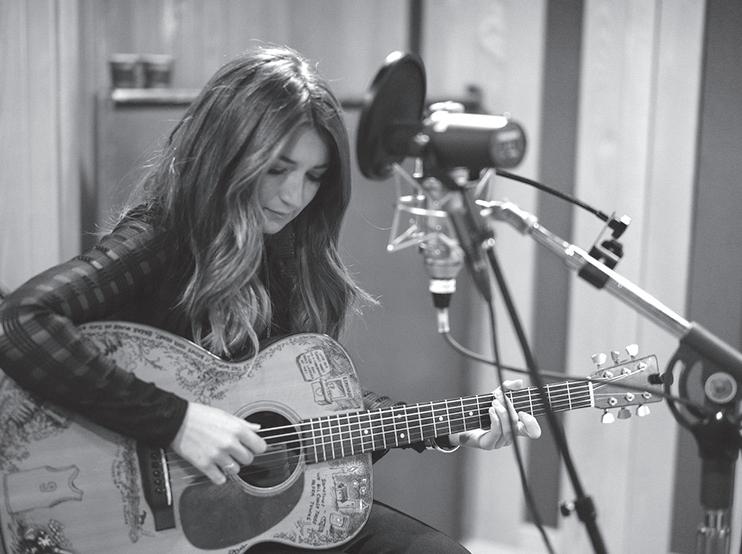
This theme of empowerment runs deep in Troop 6000. A core value of Girl Scouts is giving back to others, something Troop 6000 wholly embraces. Linde shares how the troop members constantly contribute to their communities, whether planting flowers outside of their shelter or using their hard earned money selling cookies to buy books for children in need.
“I think it gives them a safe and consistent place where they can be themselves,” Linde says of the troop. “Girl Scouts gives them the opportunity to be empowered to make the changes they see that need made in the world around them.”
With weather still jumping into the 90s at the end of September — sometimes a story of a weather extreme far on the other side of the temperatures might remind us of what a chill really feels like.
On Sunday afternoon, Jan. 28, 1951, Nashville was hit by a storm coming from the west. It left on Monday morning a coating of ice that was a taste of what was to come. On Tuesday morning, the ice was one inch thick and the sky was “sunless.” On Wednesday night, howling winds dropped trees and limbs everywhere, temperatures plummeted, and hard sleet rattled window panes. Lights went out for 80,000 people and the heat went out out over town. Later that night, the sleet changed to snow.
Nashvillians, after shivering through the night, arose on Thursday to find the city silent and the temperature at one degree below zero. Bus service was suspended and trains were 18 hours late. The bus terminal and Union Station
were packed with stranded, exhausted people.
The next morning, the weather was worse. The temperature stood at a record-breaking 13 degrees below zero. On that bitter day, the Red Cross declared an emergency and began evacuating people from heatless homes. The cold weather continued until Feb. 9 when the city received another coating of ice. Hugh Walker, of The Tennessean, had more than a foot of ice and snow piled against his garage door. He poured hot water on the pile which only caused it to freeze solid. After seeing three cars stuck across the street, Hugh began walking from his home in Green Hills to his office downtown.
He realized that he was walking through a silent world with no cars and no busses. Silent that is until a limb encrusted with a heavy coating of ice came crashing down on the pavement. Hugh finally made it to the Women’s Club on Hillsboro beside Golf Club Lane.He went inside and called The Tennessean. Ed Freeman an-
swered the phone. He told Walker, “Yes, we will publish today.” Hugh resumed walking with three and one-half miles to go. Before he got very far, he saw for the first time a car. It was a little red Nash, with a new set of car chains. A. J. Baird, of Baird Ward, was behind the wheel. He stopped and gave Hugh a ride to The Tennessean front door — Walker was extremely grateful.
That first day there was very little traffic. A heavy coat of ice beneath the snow was slick as glass. When graders scooped up the snow and ice on major streets, they literally buried cars parked along the side of the street. Some owners didn’t dig their cars out for three or four days. Hundreds of travellers were stuck in Nashville as trains and busses quit running. Walking was dangerous as there were live wires hissing and smoking on the snow. Transformers occasionally exploded erupting in flashes of green fire.
The Tennessean reported on Feb. 2 that “Nashville lay like a stricken giant yesterday
and last night, pinned down by a half foot layer of solid ice and four inches of snow.”
The weather moderated on Sunday, Feb. 4 and on Monday morning there were terrific traffic jams all over town and not many cops could be found. In addition to the slush, there were abandoned or stalled cars and trucks in the middle of the streets.
When the temperature went above freezing, broken pipes began spewing water in homes and businesses everywhere.
Power linemen from N.E.S., plumbers and electricians worked around the clock to restore electric power lines, replace broken pipes and put homes back in order.
Many Nashvillians who lived through the Blizzard of 1951 recalled it vividly for the rest of their lives. This account originally came from the article “1951 and the Winter Wonderland” by Hugh Walker that appeared in The Tennessean on Sunday, Feb. 3, 1974.
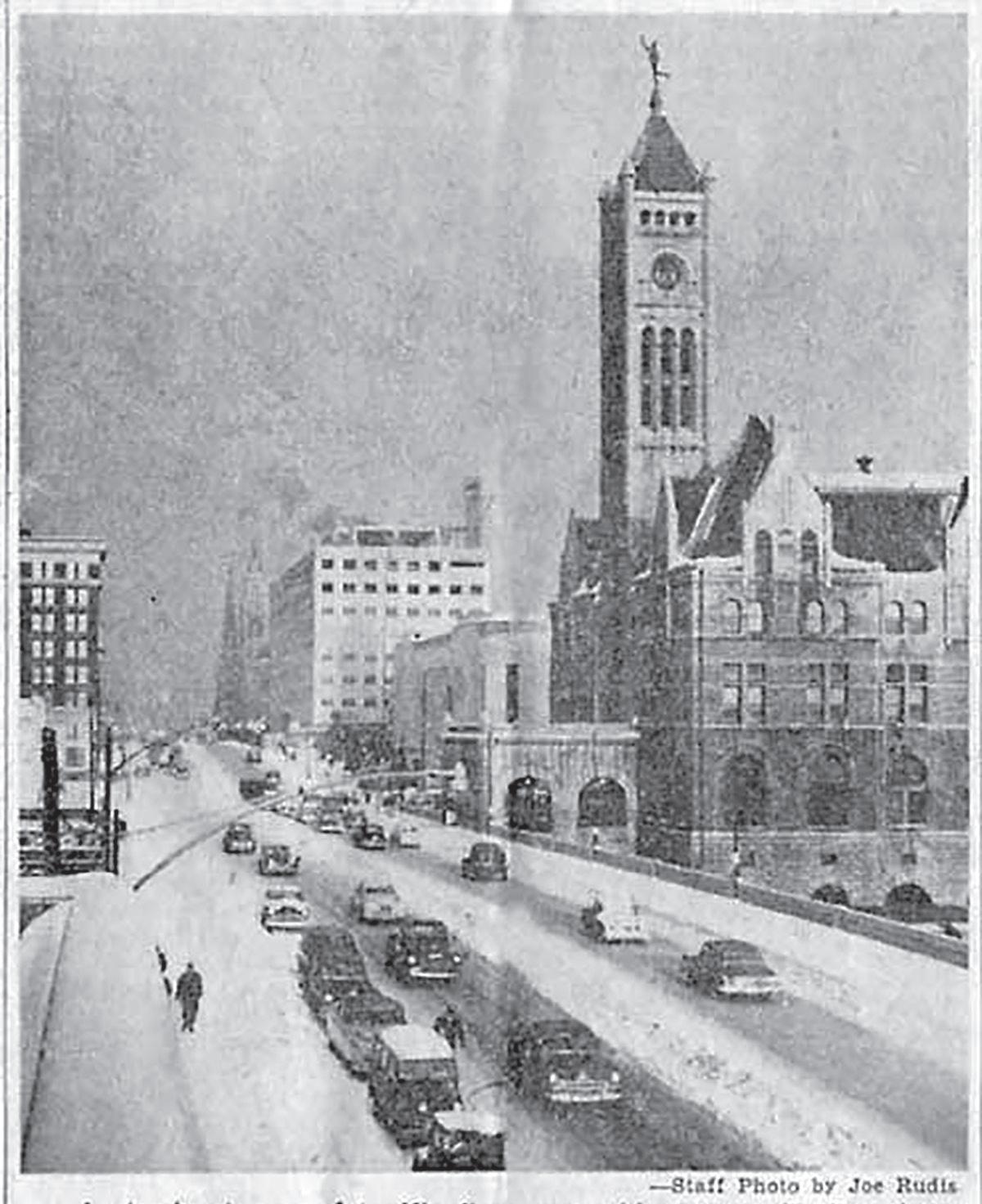

Mike P. has been out of jail for three months, and in that time he has taken part in multiple outpatient recovery programs for drug use, and joined The Contributor — all while staying sober. His lack of permanent housing makes it all more challenging. Mike wanted to talk about how he feels the criminal justice system is broken, having seen it from the inside.

How did you end up in downtown Nashville?
I was arrested. The whole time I was in jail, the plan was to get me into a halfway house and get my disability and stuff started. My family is in Virginia now. They were willing to help, but the public defender office said, ‘we’re going to get you housing, we’re going to get you disability.’ I went to Tennessee Mental Health [Services] before I went into jail. I’ve had mental health problems most of my life. My family sat back and let the public defender’s office do their job, but they didn’t. When I got released, I got released into the streets of downtown Nashville.
I walked around. I didn’t know what to do. Back before I went to jail, I was living in my car. I lost that when I went to jail. I was scared. At first I was happy when I got
out, but then it was a slap in the face because I was standing there with no money, no nothing. I ended up in Vanderbilt psychiatric hospital with [suicidal] thoughts for one night. It wasn’t until four days after I got out that I finally went to the Mission.
The court put me on community corrections with a 7 p.m. curfew. Basically like house arrest, without a house. That’s how broken the system is here.
Why was it so important to you to get into a halfway house?
I had actually told my public defender, it’s very important for y’all to get me into a halfway house. It’s so important to me, that if you told me I could get out today to be free on the street, or I could stay 60 more days and have me a halfway house, I would stay the 60 more days.
The last time I got out of prison, I went to a halfway house. I had nothing — and this is why it was so important to me — because within two years I had my own business. My family paid for it last time. They paid several thousand dollars. I finally one day said ‘hey, y’all gotta stop paying. I gotta pay. It’s my responsibility.’ I couldn’t do this to them again. I know what I’m capable of doing with the right resources.
It’s sad when jail releases a man homeless like that, with mental health issues on top of
that. It would have been easy for me to reoffend. I’m 45 years old, but if I had been 25, I would have reoffended. I’m just a little bit more grown up and know the consequence.
The system here is broken. It’s really broken, and I’m living proof of that. Im homeless because of drug use, and pretty much it’s been on my mental health, but I came out of jail homeless due to the court system.
What has worked for you with the programs you’ve been in since you got out of jail?
[The Centerstone Keys to Recovery Program] meets with me every week. They come to me wherever I’m at. What’s helpful is having people I can call on. I guess you could say I have a friend. I have a job and housing coordinator, and they’re doing what they can to get me into a halfway house, and there’s a wait. I got a housing and job coordinator, I got a therapist, I have a recovery specialist, and I have a caseworker. The downfall is probably on the weekends, I don’t have anyone I can contact.
It’s all new to me. I’m not only doing that, I’m doing community corrections, which means I have to do a drug class every week. Then I sell the paper. I got a lot going on for the good. It can also get overwhelming at times.
What effect has selling The Contributor
If I’m not selling the paper I’m sitting around. Selling the paper keeps me clean, because if I wasn’t sitting out there on the corner selling the paper, I’d be sitting out there bored, contemplating using. Selling the paper gives me something to do.
With my mental health, there are some days where I don’t feel like doing anything. Selling papers gives me a chance that, if I don’t feel good that day, I don’t have to do anything.
That’s why I’m here today. Before I started selling The Contributor, I was a ticking time bomb, ready to start breaking laws.
I hope in the future, in the years to come, I’ll have a nonprofit organization one day that focuses on homelessness. I’ve always been an entrepreneur, selling drugs, or working for myself. I think if I do another business it’s going to be a nonprofit organization. I see halfway houses in the future, 10 years from now. My long term goal is to try to start something to help homeless people, transition coming out of jail like I did. That was not good. That could have been a disaster to Davidson County, to society, the way I was let out of there.
My short term goal is to stay clean and sober every day.
When it comes to health insurance coverage, there’s a gap. There are about 280,000 Tenneseeans in it, including many of our neighbors who are homeless, according to Tennessee Justice Center (TJC).
Tennessee is one of 14 states that hasn’t expanded Medicaid. TennCare, Tennessee’s state Medicaid program, only covers children under 18 and their parents, people with severe disabilities, and women who are pregnant or have breast or cervical cancer. On the other side of the gap is an Affordable Care Act marketplace premium tax credit, which subsidizes health insurance costs, but a single person has to make $12,000 to get it.
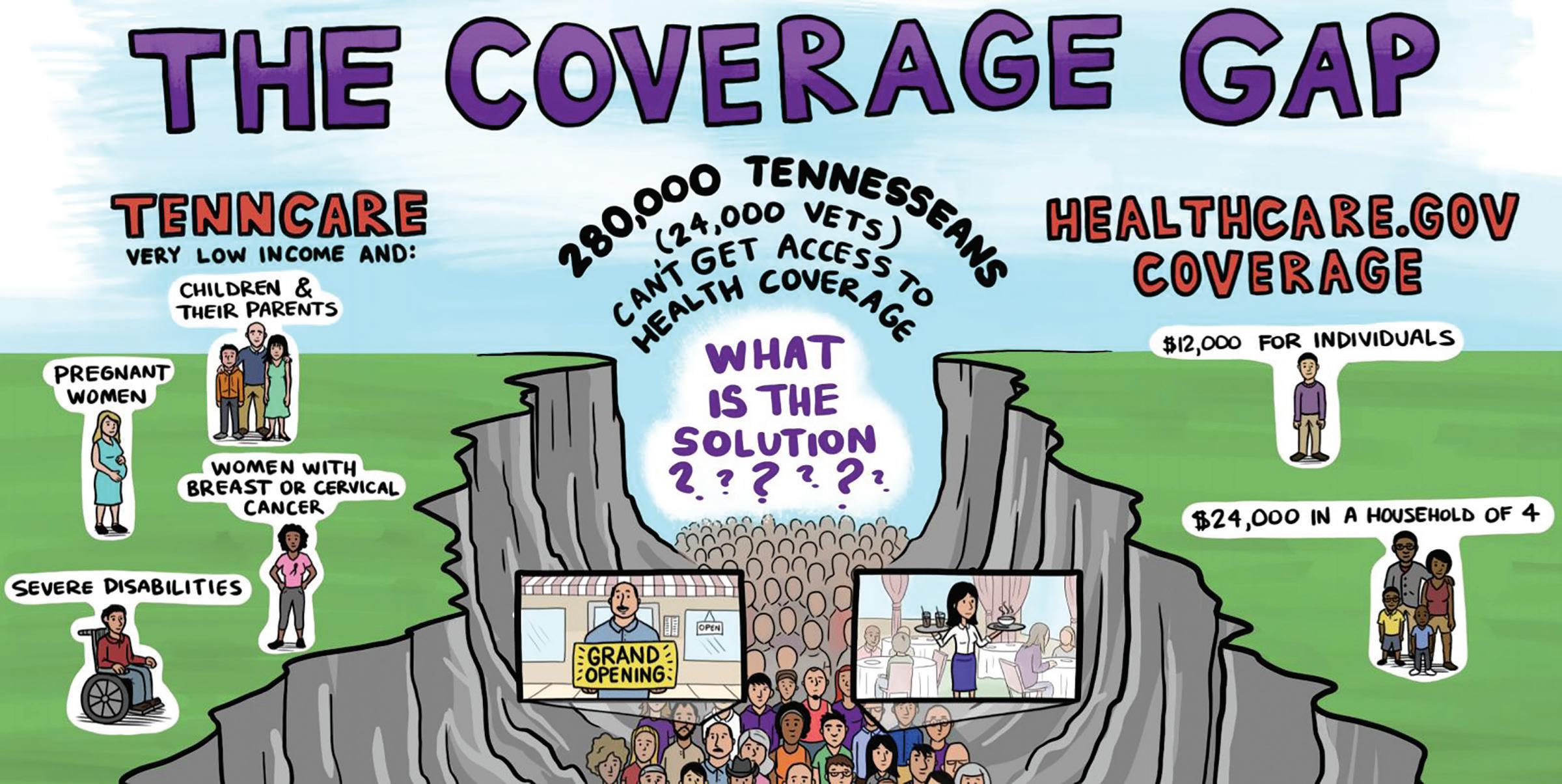
“For many of the homeless, they’re working and they
can’t afford private coverage without some subsidies, but they don’t qualify for subsidies because they’re too poor for subsidies and they don’t qualify for Medicaid because they don’t fit in the pigeonholes,” says Michele Johnson, executive director of TJC.
That said, Johnson says TJC has worked with Contributor vendors who use their proof of income through selling the paper to qualify for the tax credit.
When people don’t have health insurance they turn to church-based clinics and federally qualified health centers that offer sliding scale fees, but another problem remains.
Many of these clinics only offer primary care, which still excludes things like dental care, vision care, chemotherapy, dialysis and physical ther-
BY HANNAH HERNERapy. Specialists sometimes donate their time, often at yearly events like Saint Thomas’ Day of Health Hope and Healing, which fills Nashville Municipal Auditorium with queues.
“That’s the real challenge. If you’re homeless and in the coverage gap and need specialty care — that’s why we need expansion,” Johnson says.
For those that do have Medicaid, signing up for and recertifying it has been challenging in two different ways. Participants used to recertify via a 98-page packet that arrived (or didn’t arrive) in the mail — which makes things difficult for those who do not have a reliable permanent address. Now that process has been moved online, which Johnson says is a great improvement, but puts those who aren’t tech-savvy at a disadvantage.
The thing that makes Medicaid incredibly complicated is that there are 28 different qualifying categories. Depending on the category, you might have to show different paperwork, identification — things that people experiencing homelessness often don’t have a place to safely store. Johnson says there used to be regional offices and social workers to set an appointment with to sort all of this out, and those people don’t exist anymore.
The open enrollment for the heathcare.gov (Affordable Care Act) coverage is Nov. 1 until Dec. 15. Johnson says the main skill needed in getting people signed up for health insurance is comfortability with a computer, and TJC can train organizations who are interested in helping.
By Phone: Call TennCare Connect 1-855-259-0701 Online: tenncareconnect.tn.gov
Family and Children’s Service Get Covered Hotline: 615-724-1339.
Health Assist Tennessee: 1-800-269-4038 (English); 1-800-254-7568 (Spanish); 1-877-652-3046 (Kurdish/Arabic).
Tennessee Justice Center: 1-877-608-1009.
Henry Jones had been living on the streets of Washington, D.C. for more than a decadewhen his health finally started failing.
Sick, suffering from alcoholism, and increasingly unable to walk, he sought to check into an emergency room in the US capital — but intake workers there refused to admit him, he said, because he did not have an acute condition.
He was at risk of falling through a major hole in the social safety net.
A caseworker told him he could go to a shelter, where he could at least get a bed for a few nights. Or he could try another option: a small organization that offered medical services to the homeless, as well as a place to simply rest.
Jones went with the second option, an organization called Christ House that gave him medical care and a bed to sleep in. Later, it helped him stop drinking, get a permanent home — and even a job.
“Being on the street, people look down on you, thinking that’s the way you’re going to live the rest of your life,” said Jones, who now works at Christ House.
“And that’s what makes Christ House much different from any other place: The people help you get back up on your feet,” he said, sitting next to the showers that he oversees for use by those who need them.
Founded in 1985, Christ House was one of the first places in the country to offer a service that is increasingly being embraced in cities nationwide: medical respite, or recuperative care, which seeks to fill a gap between what emergency rooms and shelters can provide.
“This is a grey area: If you’re housed, you’d be discharged from a hospital and given instructions to stay off your feet,” said Julia Dobbins of the National Health Care for the Homeless Council (NHCHC) umbrella group, which published standards on the issue in 2016.
“But people without homes don’t have a safe, clean place to recover, and that’s a gap in care,” she added.
While homeless shelters exist across the United States, these typical-
ly close during the daytime, Dobbins said: “We criminalise homelessness in this country, so people can’t lie around — they have to be up and moving.”
Respite facilities offer rest and recuperation, but also give workers a chance to see what support patients might qualify for, connect them to other services, and generally offer them, “time to think about what is the next step in their life,” she said.
Christ House is an unusually expansive operation, offering 24-hour medical care, housing and more.
Medical director and co-founder Janelle Goetcheus recalled one resident last year who before coming to the centre had been living on a park bench near a local hospital — and going back and forth for cancer radiation treatment.
Christ House gave the man a place to stay during his treatment and facilitated his trips to the hospital.
Some patients’ needs are straightforward, said Goetcheus: for instance, a woman has surgery on her leg and needs a place to mend for a few weeks, the type of rest she would not be able to get at a shelter or on the street.
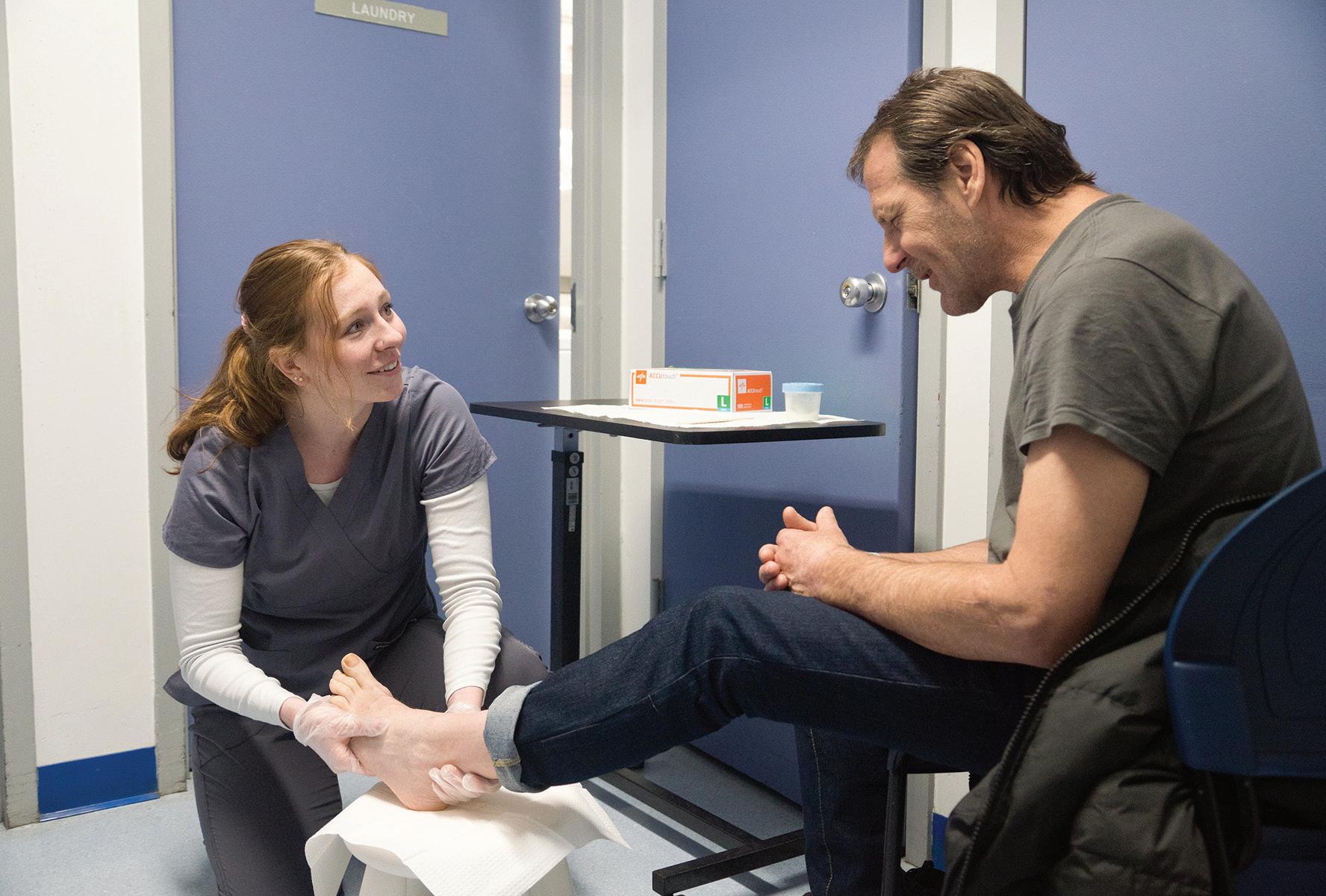
Other cases are far more complicated, involving multiple acute and chronic illnesses and mental health problems, often exacerbated by years of sleeping outdoors, substance abuse and lack of medical attention.
Goetcheus said that since the early days when Henry Jones came to the organization, the health problems plaguing Washington’s homeless population have worsened.
This is particularly true for the increasing numbers of homeless elderly people, those with mental health problems and undocumented immigrants, for whom complex medical care is often impossible, she added.
“For the hospitals, there is a lot of
pressure to have very discreet (specific) admissions for acute medical needs and then get people discharged,” she said. “So more people are ending up on the street.”
Medical respite programs have grown by about a third since 2012, going from 60 to 80 initiatives nationwide, according to the NHCHC.
Yet nationally, programs vary widely, with little agreement even on what medical respite means, although that is starting to change.
But there is growing consensus among researchers that the approach appears to offer significant cost savings for hospital systems and public coffers.
In one 2018 study, researchers with Brandeis University in Massachusetts found that respite programs could save several thousands of dollars per hospital patient by cutting down on expensive readmissions.
As yet, however, long-term funding remains the single biggest obstacle for respite programs, according to health and homelessness experts.
Most respite projects have an average of three funders, said Dobbins, and the vast majority of respite centers are unable to bill the federal government as medical providers, so they depend on philanthropy and a patchwork of public and other funding sources.
Sean Barry, a spokesman for the American Hospital Association, said the industry group does not have a public stance on medical respite, but noted it has referenced “improved care transitions and reduced readmissions” as two benefits of such programs.
The federal government does support respite programs, to some extent.
A spokeswoman for the Centers for Medicare and Medicaid Services said that although respite programs are not covered as a matter of course,
‘Really difficult place’
Interest in respite is growing significantly, said Dobbins, whose office oversees a respite network of more than 1,000 members, up from 840 in 2015.
A respite initiative at Portland nonprofit Central City Concern will soon include a specific focus on mental health — a factor that is largely missing among respite programs, Dobbins said.
Central City Concern, which has been running a respite care project since 2005, will seek to take in patients who have been newly discharged from psychiatric hospitals.
But a coordinator stressed that mental health inevitably underpins their work anyway.
“Anywhere there’s homelessness, we should be expecting there is need for mental health support,” said Jordan Wilhelms, a programme manager with Central City Concern.
The vast majority of the organization’s patients have mental health issues, often undiagnosed, Wilhelms said.
“We’re looking to catch folks at a really difficult place in their life” and help them start to make progress toward their own goals, he added, which are usually finding housing, treatment and a community.
“And without a layer of access to mental health support, those things are pretty well undercut,” Wilhelms said.
Ultimately, he said, the new mental health focus will be another opportunity to make connections with people who do not have many in their lives.
“That’s part of the magic” of the respite approach, he said.
Courtesy of Reuters / Thomson Reuters Foundation / INSP.ngo
Local mental health service provider Centerstone recently introduced a program just for people experiencing homelessness, called Keys to Recovery.
“It’s hard to work on the substance abuse or the other underlying issues causing the substance abuse if you don’t know where you’re going to sleep at night,” says Stephanie Cooper, program manager for Keys to Recovery.
In order to take part in this program, clients must be experiencing homelessness along with either mental health problems or substance abuse. The program lasts for nine months from enrollment to completion, and works to get clients sober, mentally healthy, and connected to needed resources.
The Keys to Recovery program strives to use a housing first model, which in its purest form would get clients into permanent housing before participating in further services. This entails getting clients off the streets and into transitional housing while they work on finding permanent housing.
BY HANNAH HERNEREmploying a housing first philosophy wasn’t a requirement of the grant, but it’s something the team behind this program believes in.
When working with Keys to Recovery participants, Program Housing and Employment Specialist Erwine Sainvil starts with a questionnaire in which clients specify what part of town they want to live in, what type of living environment they prefer, and how many bedrooms they need. She then relies on a network of connections with other programs and private landlords, as well as well as an intimate knowledge with the Section 8 application process, to try to get participants housed according to their needs.
“I’m trying to make it as person-focused as possible, but I’m not going to lie, it’s definitely difficult because we are experiencing the housing crisis and there are limited resources,” Sainvil says. “But we definitely try to start with temporary and then, depending on the situation it could be transitional. But the long-term goal is to get permanent.”
With the clients she works with, Sainvil says she runs into more bar-
riers with finding housing than employment. While she notices more workplaces becoming “felon friendly,” landlords haven’t gotten on board as much. Another common barrier is a record of past evictions and past due rent — people transitioning out of homelessness are rarely given a fresh start when it comes to that.
Keys to Recovery is run by a team of six: Cooper, Sainvil, two case managers, a therapist, and a peer recovery specialist. No specific parts of the program are required for the clients, but what is required is that clients play an active role in the program, and keep appointments. Meetings often take place at encampments or fast food restaurants near where the client lives or works. The program also provides smart phones to dedicated clients, complete with mental health, job search and housing search apps to help them be proactive.
“The big one is that we’re here to support you in achieving your goals, but we’re not here to achieve your goals for you,” says Cooper. “It’s going to mean so much more if you do it. I’ve seen times where stuff just gets done for [clients],
and at the end of the 9 months, I don’t want them to be back in the same situation because we just did everything for them.”
Peer recovery specialist Daniel Motel says he hasn’t experienced homelessness, but he has come close, as a result of his prior substance abuse. Motel works one-on-one with clients and brings his own testimony of recovery to the table.
“I think that it’s important for people to know that most of the people we work with, they want something different,” Motel says. “They come to the appointments, they work with us. It’s not forced, like it can be with meeting a parole officer or something... People want help, they need the support and that’s what we’re here to do — to get them out of that state and get them housed and get them away from a lifestyle that they were in before.”
The hope is that participants will decide that sobriety is important to them, and want to maintain the positive changes in their lives, but Keys to Recovery will still work with clients even if they aren’t sober at the time.
As clients phase out of the pro-
gram in the final three months, the biggest goal is to build up a support system around each client. This could involve finding them more sober environments, connecting with mentors and accountability partners, arranging ongoing outpatient substance abuse treatment, and even helping to repair relationships with family members.
In order to take part in Keys to Recovery, clients can be literally homeless (sleeping somewhere not meant for habitation), couch surfing, staying with family, in volatile or precarious living situations or simply not listed on a lease. People coming out of inpatient rehab or incarceration can also take part.The Keys to Recovery Program will survive on $400,000 federally-funded Substance Abuse and Mental Health Services Administration dollars per year for 5 years, as of fall 2018.
When talking about the people this program Sainvil says she avoids using the word “struggling,” as in “struggling with substance abuse,” or “struggling with homelessness” and instead uses the term “transitioning out of homelessness.”
said of the 30,000 patients, 17,000 are uninsured and 5,100 are experiencing homelessness.
BY BAILEY BASHAMBack in 1976, Neighborhood Health looked a bit different, according to Brian Haile, the network’s CEO.
First of all, the clinics were operated from an old house on 12th Avenue South and in a public housing apartment in Cayce Homes. The clinics, which were volunteer-led, had been started as a way to address the lack of accessible and affordable healthcare in south and east Nash-
ville neighborhoods.
More than 40 years later, Neighborhood Health has evolved into a network of 13 neighborhood health centers, all of which are still aimed at bridging the healthcare gap in the city.
Every year, Neighborhood Health cares for more than 30,000 patients, regardless of the patient’s ability to pay, their medical history, nationality or insurance status. Haile, CEO of Neighborhood Health,
Neighborhood Health provides care to people experiencing homelessness at all 13 clinics, providing lab tests, prescriptions and physicals for people of all ages and backgrounds. The organization’s Downtown and Mission clinics are two that are specifically focused on homeless services.
“When I came to neighborhood health, I had some picture in my mind about what homelessess was — people who hang out at the library or people who line up at Room In The Inn, but the idea that homelessness is concentrated to downtown is far from the whole story. We have our downtown clinics, but patients routinely tell us that they are grateful that they’re able to get care no matter where they are in the city. We try to be where people are,” Haile said.
Haile has been with Neighborhood Health since October 2017, and he said in a city like Nashville — one that is quickly becoming home to more and more people struggling with high deductibles or a lack of insurance — Neighborhood Health’s mission is crucial.
“We are the largest provider private of primary care in middle Tennessee, and we are the largest provider of care for persons of color. Caring for all populations is what’s front and center to our mission,” Haile said.

Haile also said that it’s Neighborhood Health’s continued presence in communities throughout the city that makes them unique. And for many patients, like those living with recurring health conditions or chronic pain, it’s consistency that makes all the difference.
“What makes this work and what really achieves better health out-
comes for patients is to have primary care available day in and day out,” he said. “If you think about it, you would never ask a mother to take her child to seven different doctors to get care for her child. You would never want to take your father who is on Medicare to seven different doctors. You may have 7 wonderfully gifted providers, but they’re not going to have what’s necessary when it comes to the history with the patients.”
Everything Haile and the clinicians at Neighborhood Health do is focused on building continuity.
“The best thing we can do is to help people achieve a quality of life that should be available to everyone. That needs to be our focus this year and next year and every year,” he said.
For more information about Neighborhood Health, visit NeighborhoodHealthTN.org or call 615227-3000.
It’s been almost five weeks since the Defy Film Festival, and it’s almost two weeks before the Nashville Film Festival. If you’re eager for the kind of challenging, experimental films we usually associate with festival programming, do not fear: Aquarela is here.
The latest project by Russian filmmaker Victor Kossakovsky begins on the sort-offrozen surface of Siberia’s Lake Baikal. Kossakovsky shadows a crew of rescue workers who have the dangerous task of rescuing people and their vehicles when they attempt to drive across the lake. Some of them get stuck in frozen slush, but some break through the surface and disappear into the frigid shadows below. Aquarela might be the most dangerous documentary of all time, and an astonishing shot of a car driving towards Kossakovsky’s camera before it suddenly vanishes beneath the ice is not a stunt. The film’s subtext also points to climate change.
Aquarela is a poetic examination of the
awesome power of water, and it’s shot on Arri digital cameras at an outrageous 96 frames per second — four times the rate of Jean-Luc Godard’s “Cinema is truth at twenty-four frames a second.” The film has no narration and the roaring soundtrack features only the burbling, sloshing and crashing of water; the creaking, popping, snapping of ice; and a throbbing metal score courtesy of Finnish violinist/composer Eicca Toppinen. Aquarela may seem like a picture that requires patience — it’s sometimes literally a movie about watching ice melt. But the magic of Kossakovsky’s film is that it reveals just how heart-rending and heart-racing that witnessing can be.
Kossakovsky is an unconventional director — every frame of Russia From My Window (2003) was entirely composed of footage shot outside the director’s bedroom window in St. Petersburg. The globe trotting of Aquarela might seem like the opposite
of a home-based project, but a film entirely focused on water is about as creatively confined a project as can be imagined. There are nearly no people in the film. There are nearly no words spoken by anyone. Aquarela is nearly all just water, and it’s astonishing.
Kossakovsky puts viewers face-to-face with melting glaciers in Greenland that his skeleton crew captures from a small schooner. The director puts his cameras — and their operators — close enough to the crashing snow and ice that I found myself waiting for the ensuing waves to end this film prematurely. For some reason this was not enough for Kossakovsky, who didn’t leave Greenland before submerging his cameras — and their operators — beneath the ice and intimately alongside massive moving ice floes to capture achingly gorgeous shots of glassy green and blue frozen water giving off tiny bubbles as it was melting dangerously in the water. These sequences encapsulate

all the conflicting sensations of this film which is by turns majestic, savage, treacherous, massive, deafening, but also sometimes still, silent and overwhelmingly vast.
I watched a preview screener of this film on a laptop listening to ear buds, and my stomach still turned in knots beneath my racing heart. Most audiences won’t get to see Aquarela at 96 frames per second as Kossakovsky intends. (Of course, not every audience has a Belcourt Theatre in their city.) Aquarela will open its Nashville run at the Hillsboro Village art house on Friday Oct. 4 at a full 96 frames per second. It’s required viewing for all of our neighbors interested in climate change, nature documentaries, experimental film or dangerous art.
Nolan is a critic, columnist and performing singer/ songwriter based in East Nashville. Find out more about his projects at www.joenolan.com.
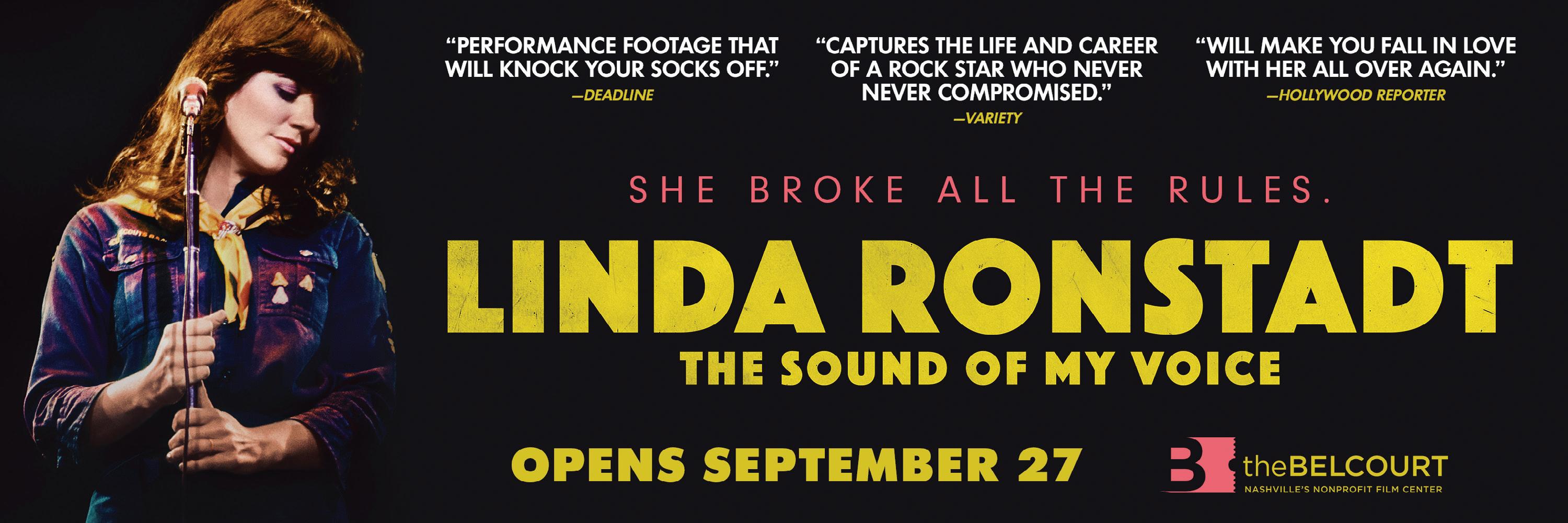
Fall is a favorite season for our family. We love New England with the changing of the weather, the changing of leaves, the changing of activities, the preparations for winter. A pause in the crisp air is the call of winter upon us, reminding us to be ready. I am reminded that to be consistent we must change for changing allows character, faith, and community to flourish.
But what changes then are necessary? What do we want to continue and what do we want to cease? As the days grow shorter, I am mindful of the shortest day and longest night of the year coming in December. I am mindful that we will pause and remember those who have died outside the quality of life of our community. We will mourn them, but does the crisp air of change cause us to pause? How might we change and celebrate lives saved?
This is a terrible challenge for many human service providers. Should we wrap love and compassion around those living outside so they know they are loved, even if it increases the likelihood they stay
outside? Should we celebrate meals served and shelter stays or should we measure how many were in a home for Thanksgiving and Christmas?
Of this, I am confident, throughout Middle Tennessee wonderful organizations are preparing for those living outside to come inside for Thanksgiving and Christmas celebrations. This is an act of our open hearts of compassion. But again, should we celebrate meals served and shelter stays or should we measure how many were in a home for Thanksgiving and Christmas? Maybe we should celebrate lives changed? Or the strength of compassion created by strangers welcoming in their neighbors not only for a meal but also into a community? I believe that Community is the greatest capital.
One reason I love Tennessee is that I see the same strength of community that I grew up in New England. A community where zucchini you share with a friend one day, become Tom’s fresh muffins that they share with you the next. A community where the person with the truck drives the person who is
physically able to pick up firewood and delivers it to the family struggling with loss. Each act allows each other to be safe and secure in their home during a long cold dark winter.
Let us live, love, share and prepare until all of the widows are safe and secure in their own home. Let us prepare for the shortest day and longest night fighting so that the fewest people have to be outside experiencing it.
Let us be prepared together for the call of winter.
Major Ethan Frizzell serves as the Area Commander of The Salvation Army. The Salvation Army has been serving in Middle TN since 1890. A graduate of Harvard Kennedy School, his focus is the syzygy of the community culture, the systems of service, and the lived experience of our neighbors. He uses creative abrasion to rub people just the wrong way so that an offense may cause interaction and then together we can create behaviorally designed solutions to nudge progress. Simply, negotiating the future for progress that he defines as Quality of Life in Jesus!
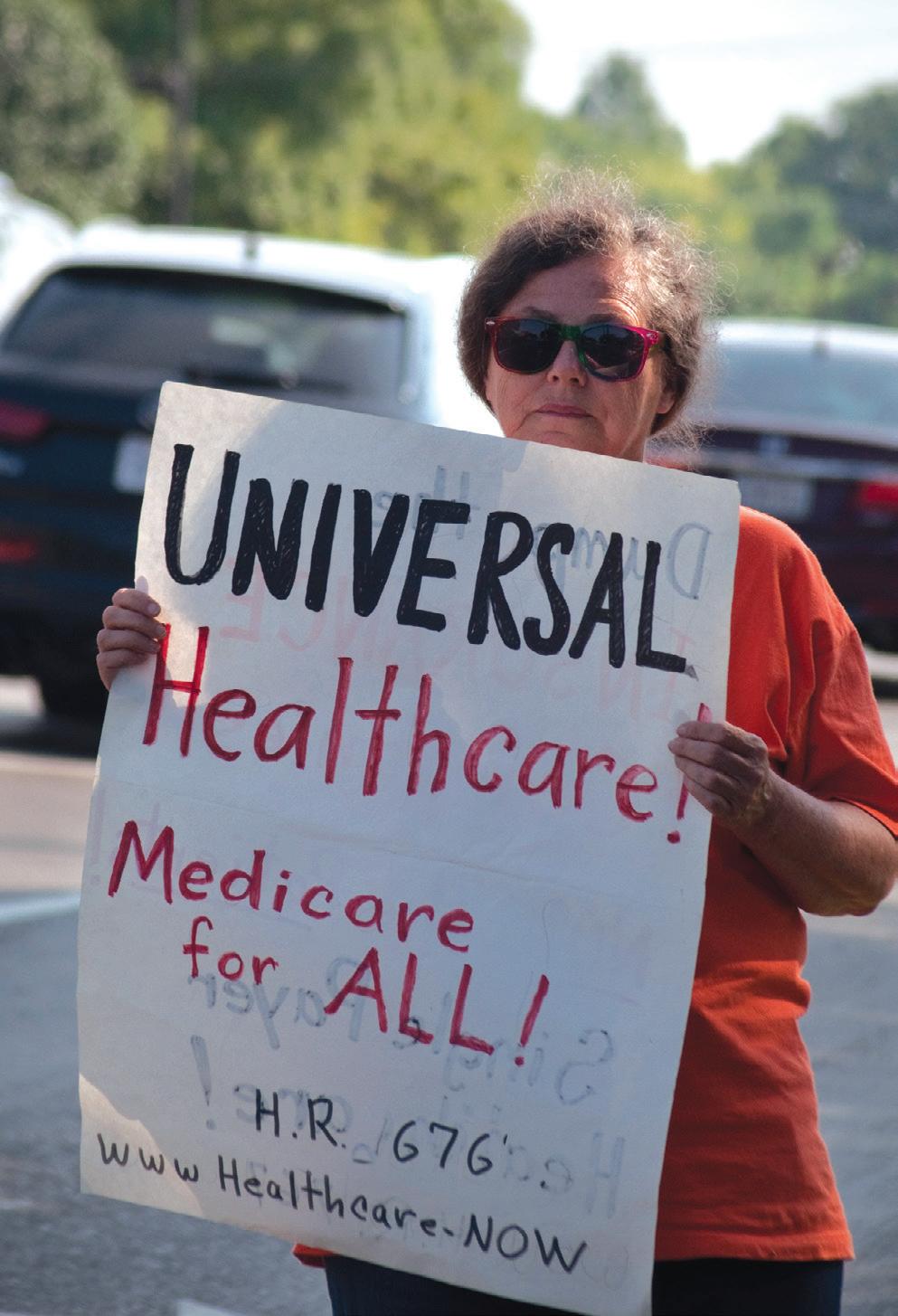
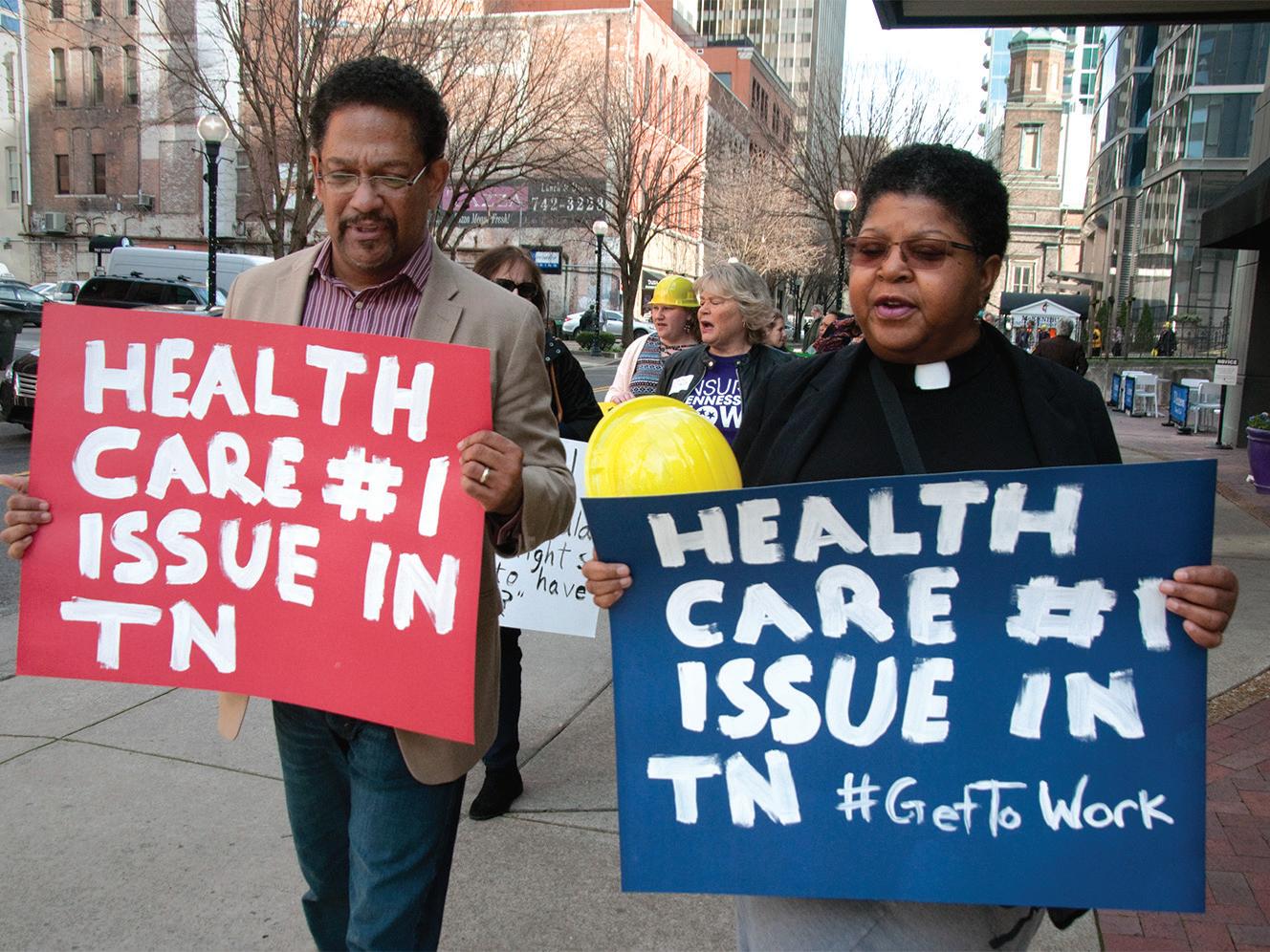

Imagine being without health insurance. Most people just freak out at the thought, but for many people experiencing homeless it’s a reality. Imagine not being able to see a doctor when you need to or having to rely on emergency rooms when the illness is just too unbearable to handle anymore. Imagine having Type 2 diabetes, high blood pressure and heart disease but no medication available to you.
I had avoided doctors until I was hospitalized with diverticulitis and was introduced to a doctor I not only liked but trusted. Dr. Thomas came into my hospital room a few years ago. His bedside manner was soft and even though I was upset about having to be there he assured me it was life or death. I had panic attack after panic attack until I couldn’t bear it anymore, and I felt like I had to leave. The nurses each tried to get me to stay and I was polite and listened to each one, but it was overwhelming. I had to go. Dr.
Thomas showed up at my door, and he assured me he’d run another scan to see if the medication was working that evening. I agreed and I never forgot what he said walking down the hall, “take a chill pill!” I laughed and stayed. That evening as promised another scan was taken. Within a few hours he came in and said I could go home tomorrow. Home? I had no home. How was I going to handle working and not being close enough to a bathroom? I had to choose a new spot and soon. I couldn’t wait until I got better, so I found a new spot. Imagine knowing that something just isn’t right when you have numbness, tingling and weakness on your left side. It’s been going on for some time, but this particular day you wake up and it’s not getting any better. You go to the ER only to find out you’ve had a stroke. If life was hard before being homeless, it just got a whole lot harder. You’re admitted for two days then discharged back to the streets
with instructions to follow up with a doctor. No money, no idea who you’ll see so, you just try going about your day hoping everything will be okay.
I tried to seek out those sliding scale places but I still didn’t make enough to be seen by a doctor. Luckily I found Neighborhood Health, which offers low cost or free services at several clinics scattered all over Davidson County. The staff there is very helpful, but stressed with so many patients and only a small number of allotted appointments. This has become the alternative for those non-emergency times, but for those emergency times you still have to seek out the local ER.
I live in the Hermitage area and if an ambulance is called they won’t take you to the hospital of your choice like Meharry (aka Nashville General) where you’re registered as an indigent patient.
My local hospital has labeled homeless people as “drug shoppers” and don’t take their illnesses seriously or give
Healthcare is a topic that is on the minds of many Americans. The subject of healthcare affects the housed, the unhoused, the working poor and the middle class.
I find myself having been on both sides of the healthcare issues as a homeless uninsured individual 13 years ago, and as a Certified Medical Assistant (NCMA-NCCT)
today. I can say that the healthcare issue is not an easy topic to tackle. Anytime you involve government in a particular issue, the stage is set for a debate for sure. As an advocate for basic human rights to be guaranteed for all, I feel healthcare is of the most basic of all human needs. Going back and forth to Metro General Hospital
proper medical attention. With my first stroke the hospital didn’t even provide the tests to determine I had a stroke.
Recently we’ve been hearing more and more about rural hospitals closing with no where for homeless people to go but to another county hospital, which puts that hospital at risk of closing too. Pretty soon the only hospitals that will be open are the private ones — the money making ones. So, where is the care and compassion for those who can’t pay? Is medicine only about the dollar amounts and screw those who can’t pay?
County health departments can act as a type of healthcare with the low cost or free care, but every time you go in you must bring ALL of your documents making it an all day event. It’s easy for someone experiencing homelessness to lose important documents and medical records.

If you have Type 2 diabetes you have to check your blood sugar multiple times a day and take medicine
regularly to keep it under control. Having no money means having no way to get test strips, meters, or medication. If you’re hungry and someone offers you something high in sugar you take it anyway, say thank you and woof it down. Hunger doesn’t consider diabetes or other health concerns. Ever go to a soup kitchen and ask for the diabetic lunch? They don’t have that, but you’re hungry so you eat whatever they have. When you’re working with limited funds and gift cards, you try to get as much food as your can without asking yourself if this sandwich will put you into that diabetic coma or agitate other health concerns.
Finding shelter, food and other necessities of life seem to take priority to a person’s health when you’re homeless or in that low income bracket. Kids need food and you need bus fare to get to a job that doesn’t pay enough for a home. There isn’t anything left over for healthcare.
to the Downtown Clinic for years, we who have been there and done that know how frustrating this merry-go-round can be.
In 2007, I obtained housing and worked at my chosen profession until I was able to draw a company pension. In 2014, I visited several healthcare facilities where I had friends as patients and residents. Some of the things I saw horrified me. In one long-term care facility I witnessed one woman who had fallen out of her bed onto the floor be ignored by passing staff.
When I enrolled in medical college after 30 years of being out of the educational system, I began to see how complex the health-
care dilemma actually was. Working two and a half years to earn my Associates Degree in Clinical Medical Assisting NCMA/NCCT has given me some firsthand knowledge as to how things in healthcare actually work.
I was blessed to be able to do my 180 hours of clinical internship by Urban Housing Solutions on Murfreesboro Pike. I was able to assist in treating many of my neighbors and friends who are so desperately in need of individual quality healthcare. The staff at The Clinic of Mercury Courts with Aaron Scott, NP as primary care practitioner, do a wonderful job in treating literally hundreds who walk in their doors. Th at is why health matters to me.




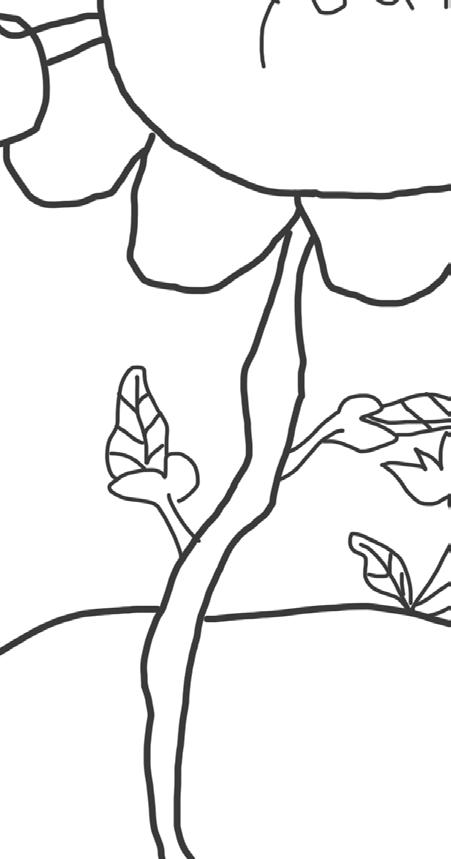







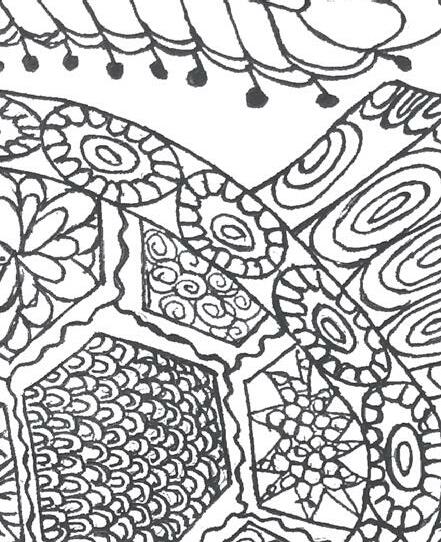
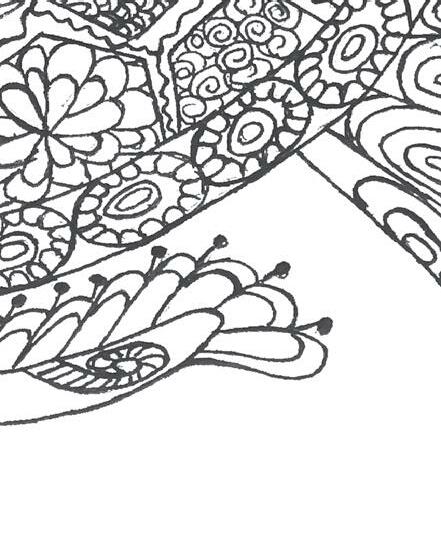
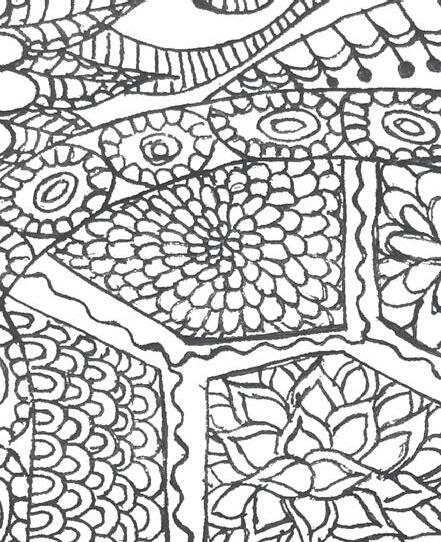
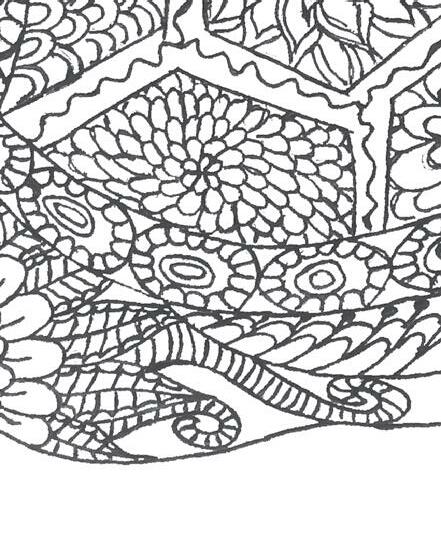
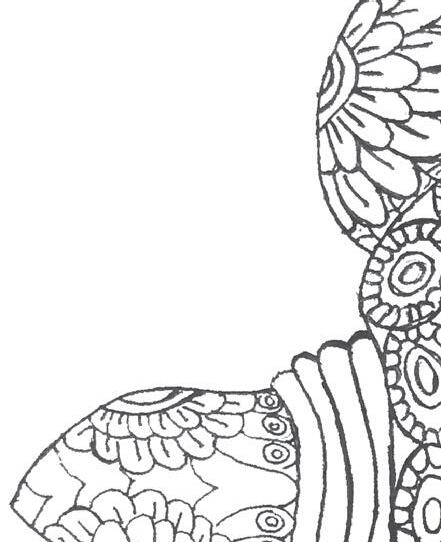
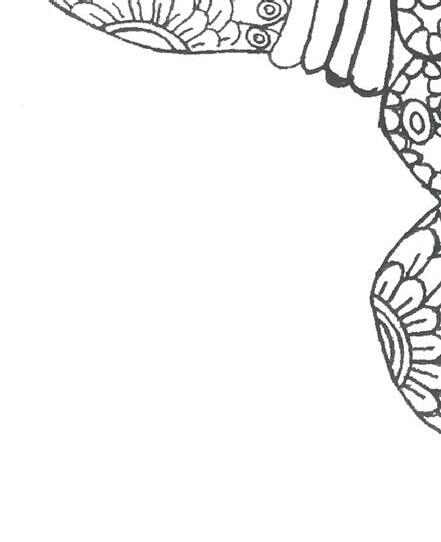


We did it! We got all the way through summer! I thought we’d never get out of that heat! Now, if we can just make it through the freezes of February, we’ll be home free! But what if life isn’t just about getting past the hard seasons? What if life is actually in the hard seasons, too? However hard this week may be, Libra, try to stop looking past it and try to live in it instead.
Earth loves Mars. Earth watches Mars at night and obsesses over fuzzy pictures of Mars and writes reams of speculative fiction about whether or not there’s life on Mars. Earth spends lots of money just to send Mars rovers for special occasions. But Mars probably doesn’t even know Earth is exists. Mars never sends Earth anything. What are the oneway relationships in your life, Scorpio? Maybe you should take a step back and see if any rovers come your direction.
I bought my first porch-pumpkin of the year. I picked out a good one. Not so small that the neighbors won’t notice and not so big that it turns into an immovable pile of mush at the end of the season. It’s got a stem bent like a handle and a sideways scar that makes a crooked smile across the front. Do something like I did today, Sagittarius — a little something to remind yourself just where and when you are.
It’s like you’ve got everything you need, but somehow you still feel stuck, right, Capricorn? Maybe you should try having less of what you think you need. If you rely on a computer, try working on a pad and pen. If you think it takes a car to get the job done, try doing it on a bike. Sometimes
giving yourself a new limitation can be better for your process than all the open options in the world.
Are you getting a cold, Aquarius? Be honest. Faking like it’s just allergies isn’t going to help. As inconvenient as it is, a little autumnal cold can be a valuable time for a forced restart. Don’t waste valuable energy fighting your way through. If you’re body’s not cooperating, give your body the day off.
Everybody I know is always busy. That’s all anybody ever wants to talk to me about. “I’ve just been soooo busy lately!” says everybody. I think you’re gonna have a slow week, Pisces. I think you’re gonna be unbusy for once. And I think you should embrace it. Don’t try to make busy just to impress your friends or legitimize yourself. They’ll be plenty of time for busy later.
It’s been all and nothing this year, hasn’t it, Aries? Feast and famine. You’ve been riding that pendulum from one side to the other for months now. The bad news is, it’s gonna keep on swinging. The good news is that you don’t have to. Let go. Give up on the back and forth and settle-in to one spot for at least a minute. Life is gonna keep on swinging. But this week you can just stay put.
Wait, you’re here, Taurus? I really wasn’t expecting you this week. Did you RSVP? I asked everybody to RSVP. I mean, it’s no big deal, we’ll find a place for you and … you didn’t bring a date did you? Really, it’s fine. Tell you what, could you just squeeze in right between Aries and Gemini. Gemini RSVPed for two and his date got the stomach flu. You can borrow some of Aries’ horoscope. She’s vegan.
At an atomic level, the human body is made up mostly of oxygen, carbon and hydrogen. There’s also some nitrogen and a little bit of phosphorous and calcium. That’s about 99 percent of what’s in your body. (Even if you count the cheeseburger you ate for lunch. It’s mostly oxygen, carbon and hydrogen too.) Sure, there’s more to you than the sum of your parts, Gemini. But this week, I want you to think about the parts and save the sum for later.
I feel like I just got this phone. What was it, three years ago? It was the most amazing piece of technology I’d ever held in my hand! Now it’s obsolete. But can’t it still do all those things it could do before? Must we always scramble for the newer, faster and more remarkable? Probably so, Cancer. But right now you can take some time to appreciate something “old” and “outdated.” Do it for old times’ sake.

My great aunt Melpomene never missed a single episode of her favorite daytime soaps. Long after all her favorite cast members had left the show or died trying, she would still watch and complain that it wasn’t as good as it used to be. What are you still staring at that has long since stopped enriching you, Leo? Move on to something new that actually brings you joy now. You can change the channel or turn off the set altogether.
What are you good at, Virgo? Make a quick list of five things you do well — this will take longer for some Virgos than for others. You may feel like some of the things on your list are talents you were born with. But which have you worked hardest for? This week, Virgo, teach somebody else something that you’ve struggled to learn.
Mr. Mysterio is not a licensed astrologer, a renowned Martian chronicler, or a subsidized agri-businessman. You can email Mr. Mysterio at mrmysterio@thecontributor.org, or check in on Twitter at twitter.com/mrmysterio. This set of Hoboscopes first ran in September of 2015.

A soul crying in the night cut through by surgeon’s knife Blood and guts sucked away Poison destroys bone Pray to gather strength the best must stay Blood and guts prevail cut to pieces the soul must heal Past drips away inch by in step by step true spirit rising
A soul crying for life Blood and guts with all his might
My doctors ordered me an outside scooter to get to my appointments. Medicaid delivered it, but they didn’t tell me until two and a half months in that the scooter was meant for inside use, that rain affected it, and that hills pull the battery down. I took it to get it fixed two different times, but now the scooter will say it’s fully charged but it won’t even take me half a block. I literally have to push the scooter across the street, and sometimes I feel it fall sideways on me. It has happened quite a bit where it’s fallen sideways and I’ve gone down with it. This happened where I was living. I hit my head on a steel bench. They’re trying to make me look like I’m just a homeless person out there using my scooter to get around. I do use my scooter when I go out to sell my papers, but I don’t see what’s so wrong with that. They said I use it like it’s a car. Well, I’m told it’s too dangerous for me to drive now. And it’s too dangerous for me to walk everywhere. My doctors said, Mr. Boyd you keep falling, you’re going to be paralyzed for life. My doctors will state that I’m subject to fall at any time. My doctors ordered the scooter for me through Medicare because I have severe neuropathy and I have seizures, I have epilepsy. Now they refused to fix the scooter any more. They said, we cannot order you another scooter because Medicare only pays for one scooter every five years. That’s not my fault. That’s a hurtful thing to me. I want an outside scooter like I was supposed to get in the first place.
In late August, I moved in with my best friend of 11 years and her boyfriend. She’d been asking me to move in with her for months and I finally gave in. They had a three bedroom place, and one of the rooms was on it’s own floor.
When she told me about the place, I was like yes that sounds awesome because at the time I was renting a room out in Bellevue from a young couple with three children and it was only a two bedroom duplex. In this new place I would have my own bathroom and my cat and two dogs would not be confined to a single room (except to go to the bathroom and on walks).
Things were going good until September 1 when I was thrown a curveball. I was devastated by this news. I was told in three days we all had to move. WHAT!!! OMG!!! ARE YOU SERIOUS? I had no clue where I was going or what I was going to do.
I packed my things and put them in storage — with the exception of my TV, few pieces of clothing, a blanket, and a couple of pillows to make a pallet on the hardwood floor. Lord knows I couldn’t afford a storage on my own on such a short notice.
I found a place called Connie’s Canine Camp Plus to take my dogs, and a friend agreed to take my cat.
So at 7 a.m. on Sunday, Sept. 1 off my friends went with my cat Puss Puss. My dogs Harrison and Little Baby were left at the house with me waiting for Pastor Sandy Shawhan to get out of church to come get us. I already felt
bad about asking her for help because she also does Prison Ministries at TN prison for women, but Miss Sandy went out of her way to come get me. I would never have asked her to come and get us at that time of morning.
I had already texted Miss Trina, the owner of the house, to let her know I had to wait on my ride to come get us. While waiting on her return message, my friends ol man calls to tell me I had to leave and that Miss Trina was calling the police on me, which was B.S. He just didn’t want me left inside the house. He wanted me outside in the heat waiting on my ride. Well, I talked to Miss Trina and she just told me text her when I left. Once Sandy got there to get us, I loaded everything up and we took my dogs to Bellevue were Connie lives. It broke heart. I cried like a baby. My pets are like my children. They all three sleep with me every night. Those babies have been with me through thick and thin. Once they were settled in, Sandy took me to the bus stop and I went to Daily’s and asked if I could leave my newspapers there until tomorrow. I had two backpacks and that was way too much for me to handle at one time.The one that had my clothing and hygiene in it was so big, it made me look like a turtle lol!
After that, I was handled off to stay at a motel. I refused to go to The Mission. I’ve had a bad experience there in the past.
It was getting late at this point, so I
went and rented a motel on Dickerson Road. The Congress. They say back in the day it was a military barracks. If you look at it, it does remind you of something to that sort. The lady that owns the motel was working that afternoon and I said I was going to be there for a couple of days. She let me leave a bag there to keep me from carrying around two bags.
After a couple of days, I thought, I’m going to post something about all of this on Facebook. So I did that afternoon. Fran hit me back asking what was going on. I began to tell her and she said, “Stop paying for a motel and come stay with me.”
I really didn’t want to. I guess you could say I was scared.
So the next day I called Fran when I was done working and she took me to the motel where I was staying and we picked up my backpack and went to her house. On the way there, she told me that her and her mother Mrs. Collins wanted to pay to fix my broken front teeth (that were broken due to domestic violence). The bizzare thing was Mrs. Collins had never met me. She had only heard about me. You already know I cried like a baby
On Monday, Sept. 9th at 9.am on Tuesday I was sitting in the dentist. By 9:38 they told me I would have a new smile the next day.
Today I smile with a new smile that I’m very grateful for. I did pay $100 and still owe $100 for it, but I’m working on paying it. A lot can happen in two weeks!
Living with brain cancer and a brain tumor is not easy. It is living one day at a time. You pray that you get up the next day. You get tired a lot and you throw up a lot. A lot of people stay away from me because they think I am going to die in front of them. This is why I have no friends. The only friend I have is my
service dog and that’s all I need. And my husband. They are all I need in my life. Everything in my life needs to be positive so when you see me on the corner selling papers be kind. I have a service dog that I bring with me in a red stroller. Please don’t ask if there is a baby in there because there’s not. Thank you.












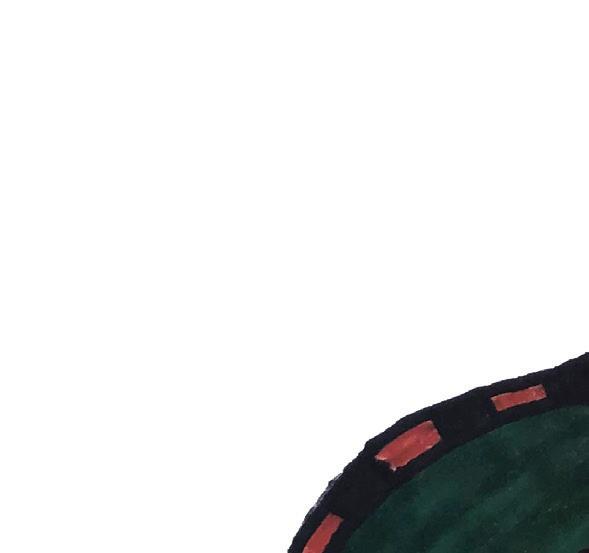
KEN J.
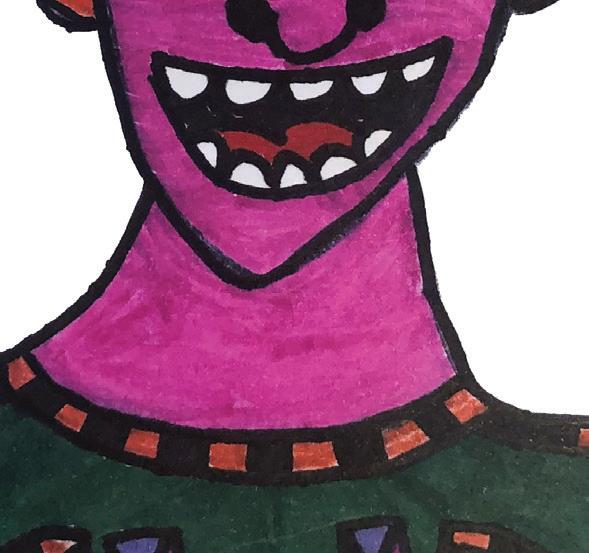
The greatest part of me used as a weapon to break to break my soul








As vengeance bruns directed inward love endures


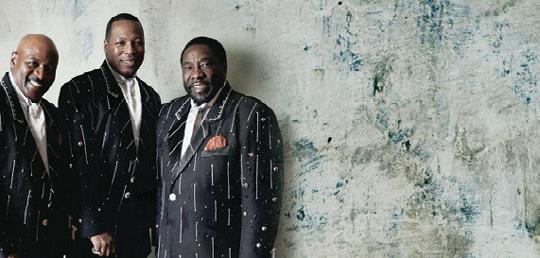


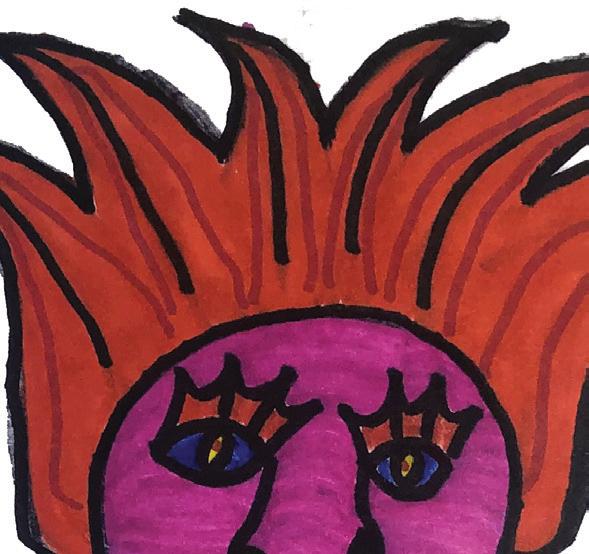
My missing part yearns to be complete For the day my missing part comes back to me.

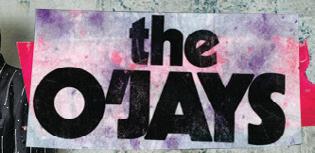

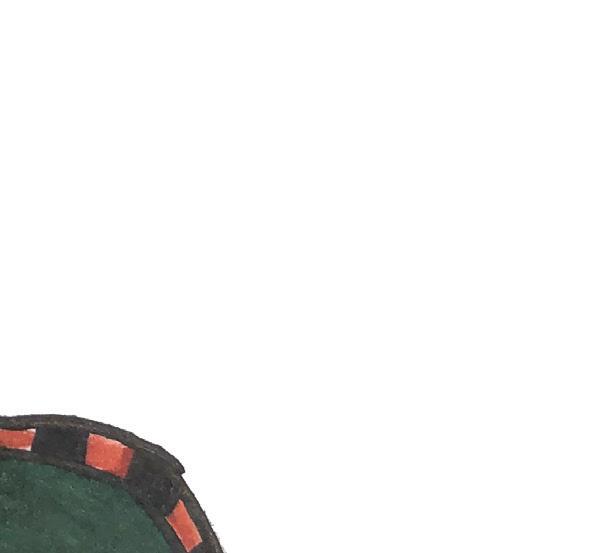

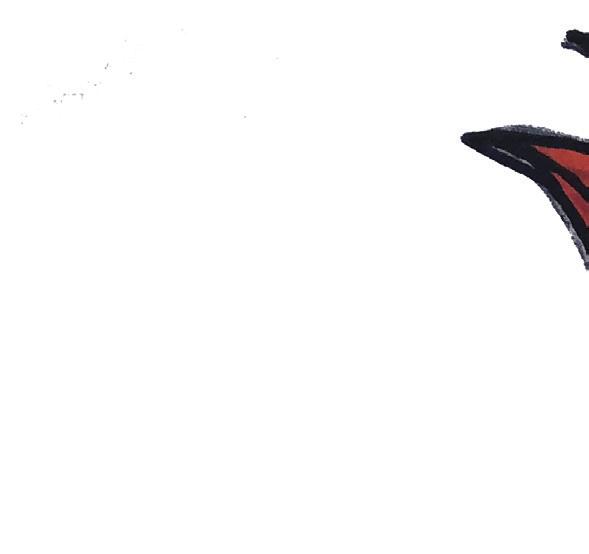
MARY B.
Her name is Fran
She is a Kentucky fan
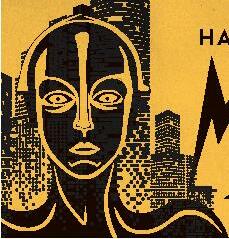
ERIC H.


Wrecked my truck Lost my dog Got chased out the woods By a fat wild hog Was living well Now in a dump

Thanks to the courtesy Of Donald Trump
BY DAVID "CLINECASSO" C.

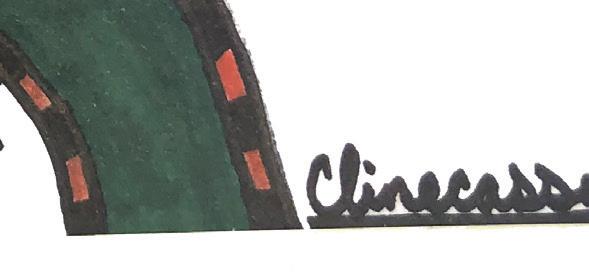


















VICTOR J.
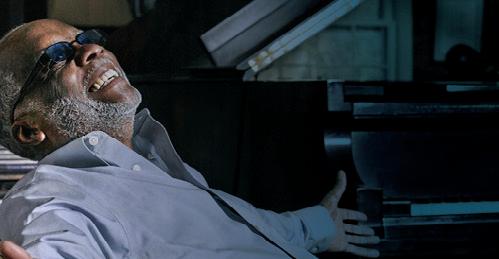

People can be good and bad
They can love and hurt you
She is a country girl As well as a small town girl The most important thing she is my friend


But God loved people He sent his son to save us all




